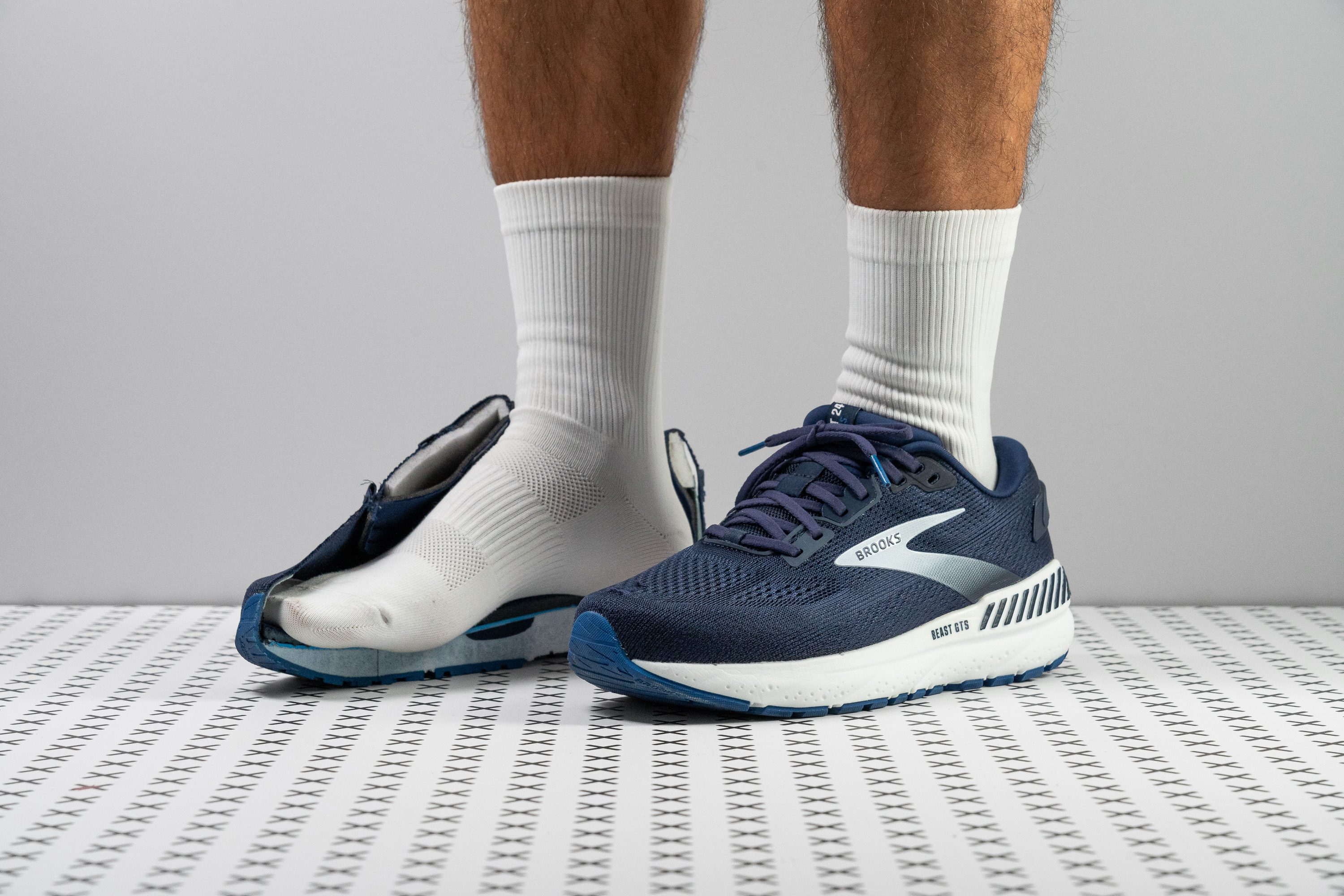Nuestra conclusión
Pros
- Suela exterior resistente al desgaste y duradera
- Parte superior cómoda
- Ideales para talonadores
- Sirven como zapatillas tipo casual versátiles
- Diseño de alta calidad
- Lengüeta innovadora
- Estabilidad de 10
- Plantilla que se centra en la estabilidad
Contras
- Transpirabilidad limitada
- No son aptas para los corredores de metatarsos
- La mediasuela se siente muy firme
- ¡Siguen siendo demasiado pesadas!
Veredicto de los usuarios
- Top 28% entre zapatillas de running de estabilidad
- Top 24% más vendidas zapatillas de running
Comparativa
Las zapatillas de running más parecidas
+ + Añadir unas zapatillas | |||||
|---|---|---|---|---|---|
| Puntuación global | 86 Buenas | 88 Notables | 85 Buenas | 85 Buenas | |
| Precio | 120 € | 180 € | 150 € | 160 € | |
| Pace | Correr a diario | Correr a diario | Correr a diario | Correr a diario | |
| Absorción de impactos | Baja | - | Moderada | - | |
| Retorno de energía | Bajo | - | Bajo | - | |
| Tracción | Moderada | - | Alta | - | |
| Arch support | Estabilidad | Estabilidad | Estabilidad | Estabilidad | |
| Peso laboratorio Peso marca | 12.6 oz / 357g 12.6 oz / 357g | 11.6 oz / 329g 11.8 oz / 334g | 10.3 oz / 291g 10 oz / 283g | 12.5 oz / 353g 12.2 oz / 346g | |
| Drop laboratorio Drop marca | 12.7 mm 12.0 mm | 7.2 mm 8.0 mm | 13.5 mm 12.0 mm | 12.1 mm 12.0 mm | |
| Técnica de carrera | Talón | TalónMedio/antepié | Talón | Talón | |
| Talla | Tallan un poquito pequeño | Tallan un poquito pequeño | Tallan un poquito pequeño | Tallan un poquito pequeño | |
| Rigidez de la mediasuela | Firme | Equilibrada | Equilibrada | Firme | |
| Diferencia de la rigidez de la mediasuela en frío | Pequeña | Normal | Pequeña | Pequeña | |
| Durabilidad de la parte delantera | Decente | Decente | Decente | Decente | |
| Durabilidad del acolchado del talón | Media | Baja | Alta | Alta | |
| Durabilidad de la suela exterior | Buena | Buena | Buena | Buena | |
| Transpirabilidad | Baja | Media | Media | Media | |
| Anchura / ajuste | Media | Media | Media | Media | |
| Anchura de la parte delantera | Media | Ancha | Media | Media | |
| Flexibilidad | Moderada | Rígida | Moderada | Rígida | |
| Rigidez torsional | Rígidas | Rígidas | Rígidas | Rígidas | |
| Rigidez del contrafuerte del talón | Rígido | Rígido | Rígido | Moderado | |
| Talón laboratorio Talón marca | 38.5 mm 36.0 mm | 39.1 mm 41.0 mm | 39.0 mm 39.0 mm | 36.5 mm 36.0 mm | |
| Antepié laboratorio Antepié marca | 25.8 mm 24.0 mm | 31.9 mm 33.0 mm | 25.5 mm 27.0 mm | 24.4 mm 24.0 mm | |
| Anchuras disponibles | EstándarAnchoExtra Ancho | EstándarAncho | EstrechoEstándarAnchoExtra Ancho | EstrechoEstándarAnchoExtra Ancho | |
| Orthotic friendly | ✓ | ✓ | ✓ | ✓ | |
| Estación | Todas las estaciones | Todas las estaciones | Todas las estaciones | Todas las estaciones | |
| Removable insole | ✓ | ✓ | ✓ | ✓ | |
| Clasificación | #184 Top 50% | #136 Top 37% | #213 43% inferior | #221 41% inferior | |
| Popularidad | #90 Top 24% | #281 25% inferior | #6 Top 2% | #187 Top 50% |
Quién debería comprárselas
Creemos que las Brooks Beast GTS 24 son una opción excelente para:
- Los corredores con sobrepronación que necesitan unas zapatillas duraderas y con sujeción para sumar kilómetros fácilmente.
- Los talonadores que están buscando unas zapatillas fiables para el día a día que tengan una suela exterior duradera.
- Los que quieren un modelo estable que también les sirva como un par cómodo para caminar y que no tienen pensando correr a ritmos más rápidos con él.
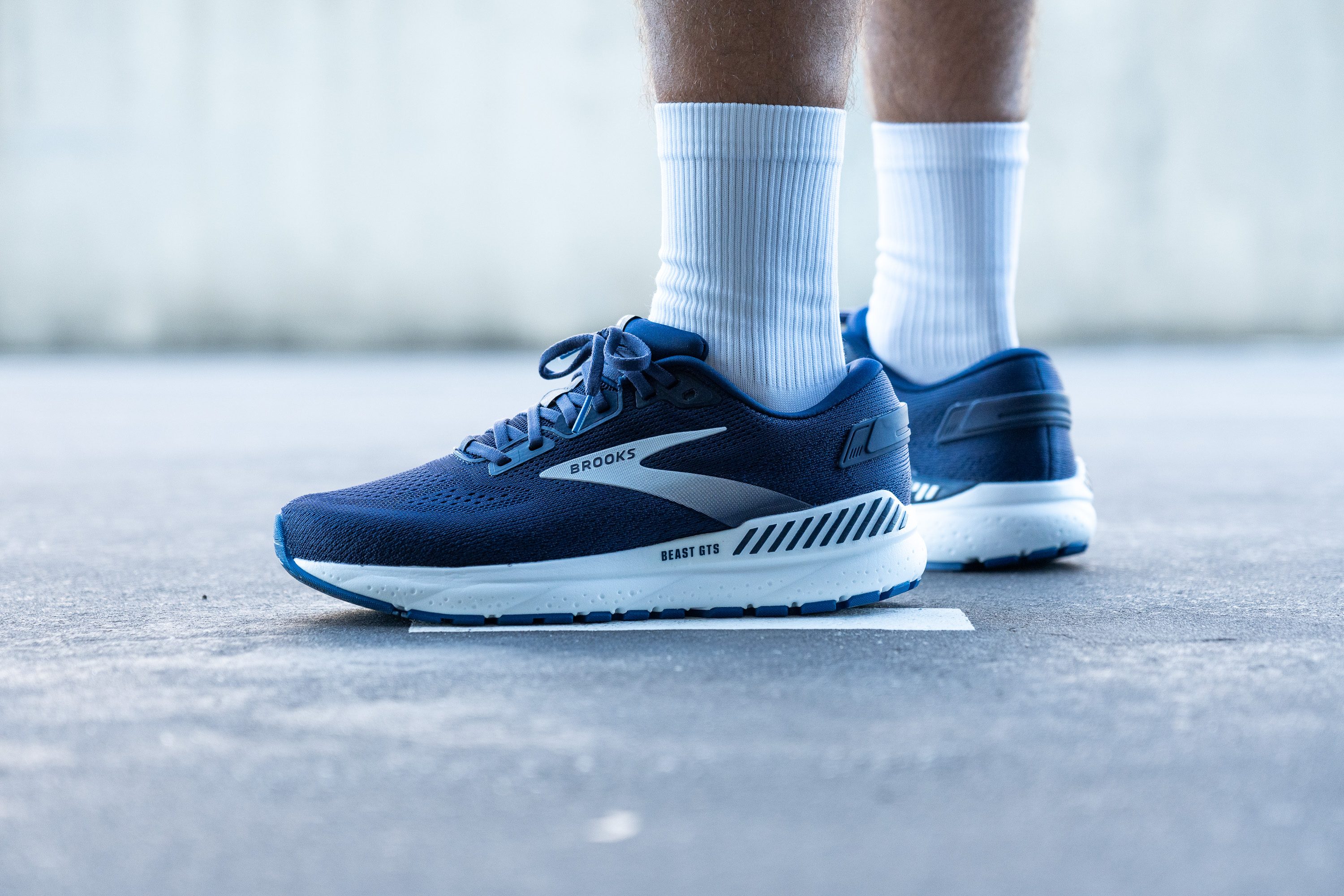
Quién NO debería comprárselas
Las Beast GTS 24 son unas zapatillas llenas de contrastes: tienen algunas ventajas que nos han dejado boquiabiertos, pero también cuentan con ciertos inconvenientes que nos han hecho llevarnos las manos a la cabeza. Con un pronunciado drop de 12,7 mm y un atenpié estrecho, creemos que no son la mejor elección para los corredores de metatarsos o de mediopié. A ellos les recomendamos las Hoka Arahi 7 o las Altra Experience Form, que probablemente les gusten más.
También estamos convencidos de que lo pesadas que son estas zapatillas y lo firme que es su mediasuela pueden hacer que algunos corredores no estén del todo contentos con ellas, sobre todo si están buscando algo más mullido. Alternativas como las ASICS Gel Kayano 31, que están más amortiguadas, o las ligeras Saucony Guide 17, pueden gustarles más.
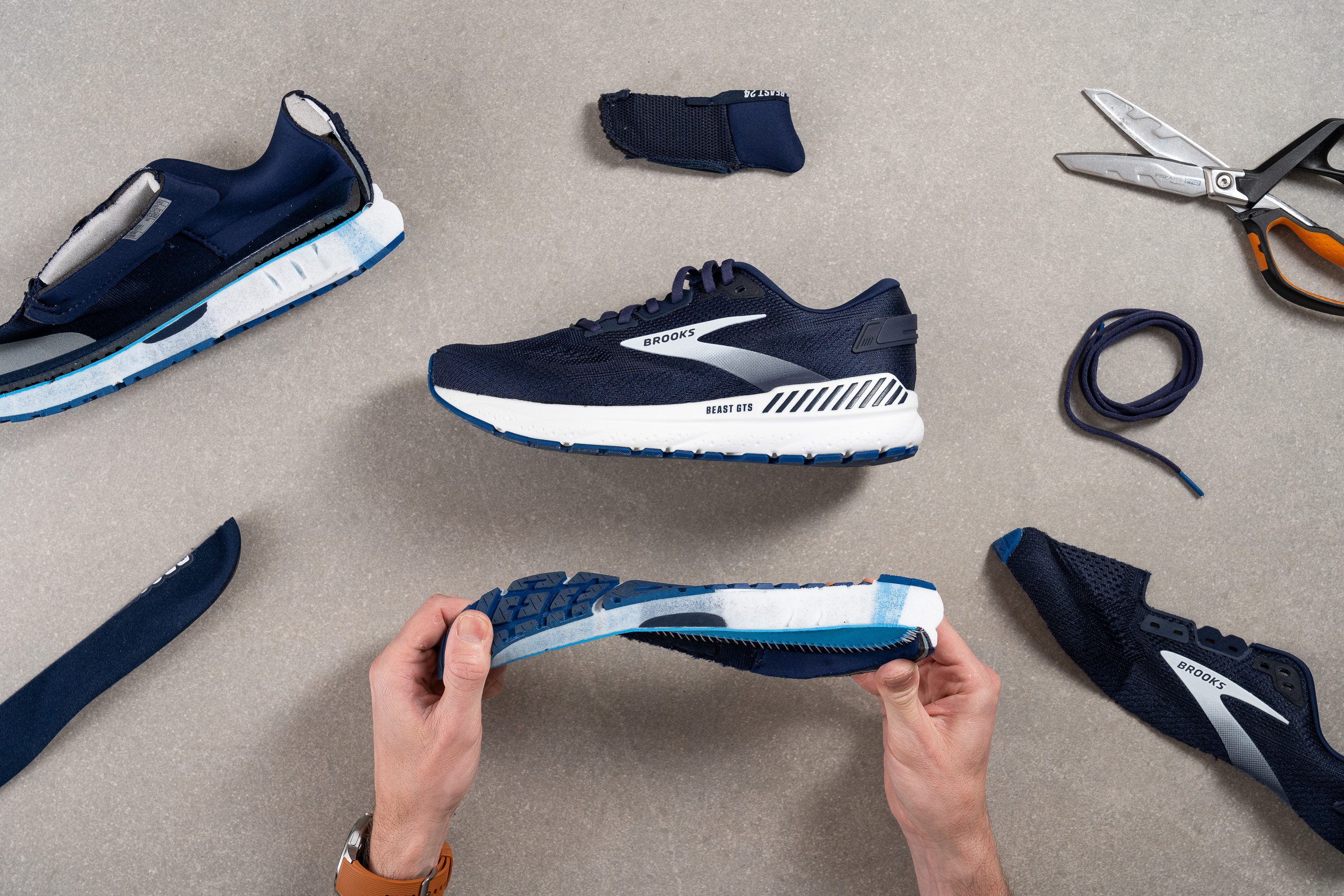
Amortiguación
Shock absorption
Aunque tienen una suela gigante, las Beast GTS 24 no ofrecen mucha absorción de impactos. Se llevaron un resultado de solo 108 SA en el talón, lo que las convierte en una peor opción para los corredores que están buscando una pisada mullida que sea como una almohada para los pies.
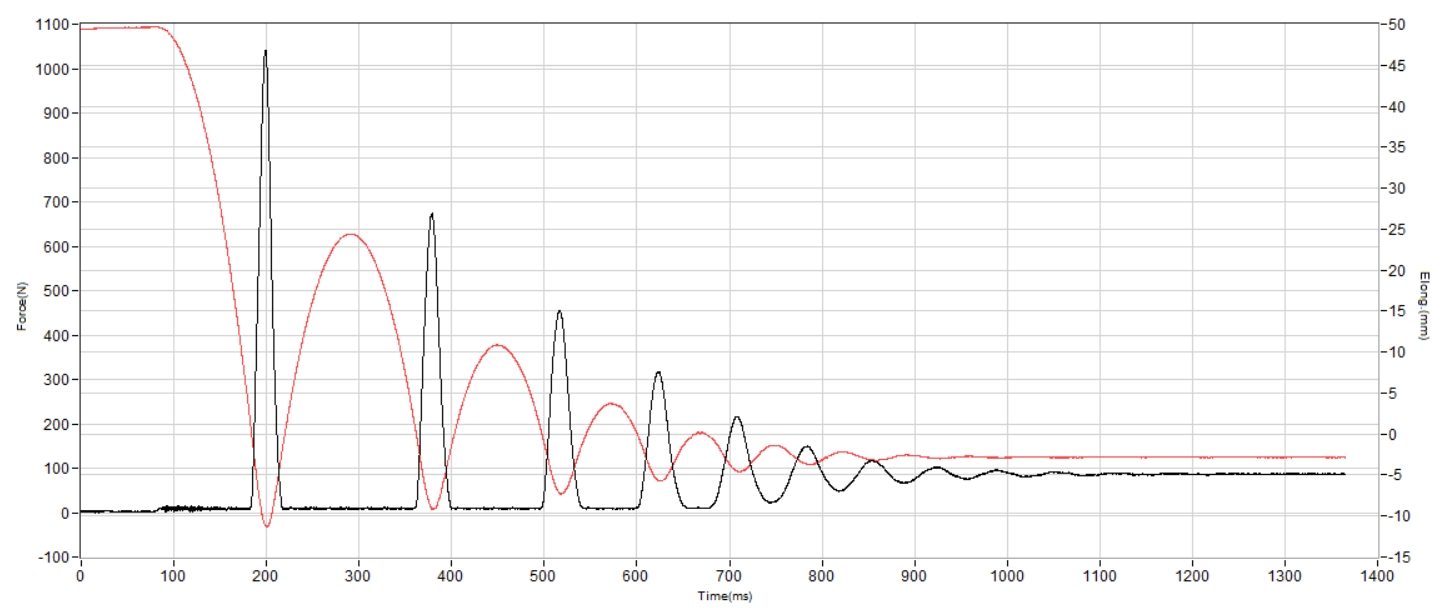
| Beast GTS 24 | 108 SA |
| Media | 129 SA |
Energy return
El retorno de energía también es decepcionante, ya que apenas supera el 50 %. En nuestras pruebas, comprobamos que era de un 52,9 % en el talón y un 55,0 % en el antepié. Aceptable para el uso diario, pero lo más probable es que te falte el impulso necesario para entrenar en serio.
Teniendo en cuenta lo que cuestan, ¡sí o sí queremos ver una mejor espuma en la v25!
| Beast GTS 24 | 52.9% |
| Media | 58.5% |
Altura de la suela en la zona del talón
La razón principal por la que este modelo pesa más que las Beast GTS 23 es que tienen más espuma bajo los pies. Para ser más específicos, Brooks ha aumentado la altura de la suela en el talón de 36,4 mm a 38,5 mm, una pequeña subida que justifica el incremento de peso.
Eso sí, nosotros creemos que a lo mejor no merece la pena. En nuestra opinión, las Beast anteriores ya eran lo suficientemente altas, y lo que este modelo necesita es una espuma mejor. Pero bueno, que igualmente nos parece un cambio menor.
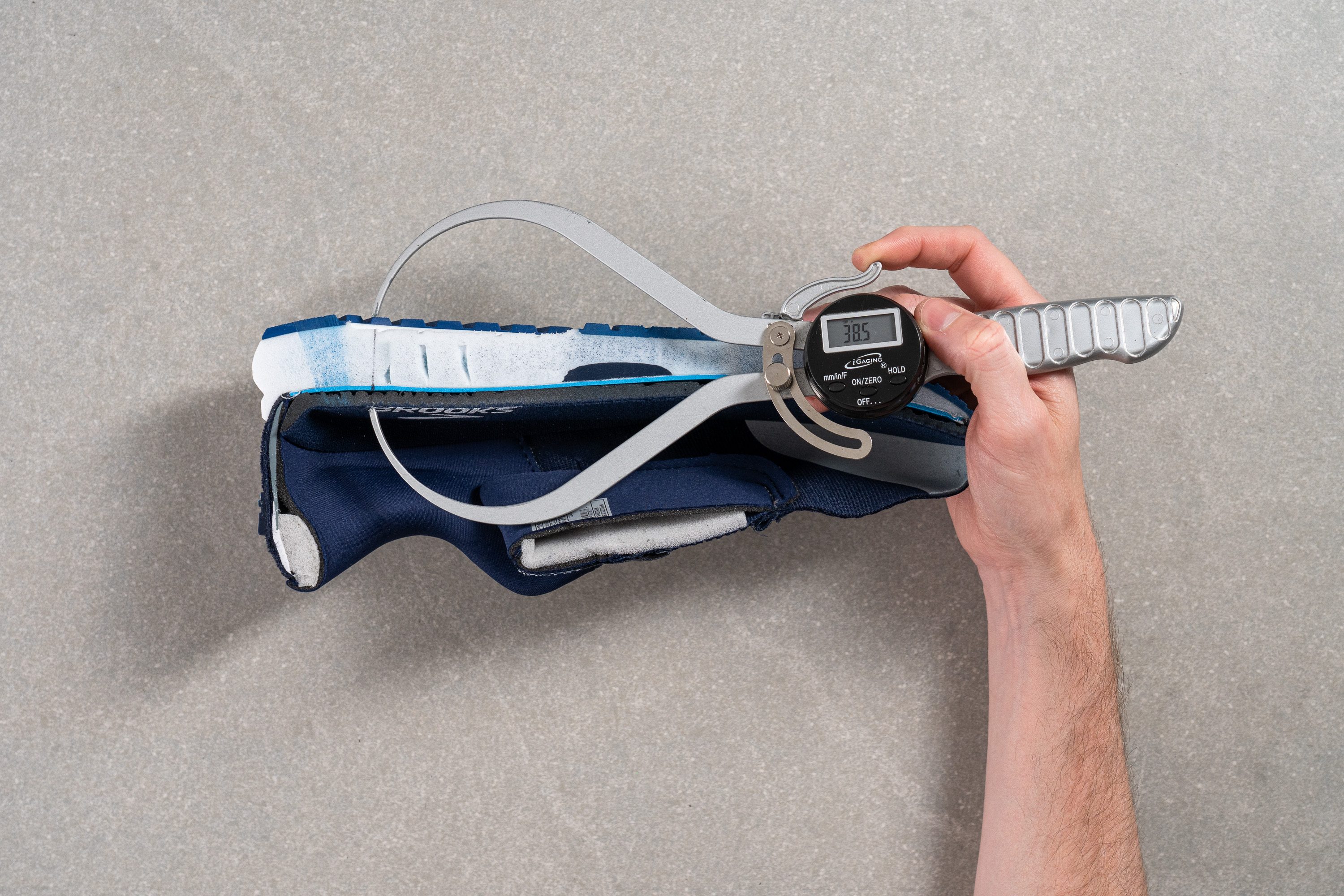
| Beast GTS 24 | 38.5 mm |
| Media | 34.8 mm |
Altura de la suela en el antepié
La parte delantera de estas zapatillas tiene un extra de amortiguación, protegiendo las articulaciones del antepié. Cuando la medimos, nos dio 25,8 mm, así que son un poco más altas que el modelo anterior.

| Beast GTS 24 | 25.8 mm |
| Media | 26.2 mm |
Drop
Con un drop alto de 12,7 mm, creemos que estas zapatillas son ideales para los talonadores. Sin embargo, en nuestra experiencia, a los corredores de metatarsos y de mediopié pueden no terminar de gustarles, ya que a lo mejor no encajan del todo con su técnica de carrera.
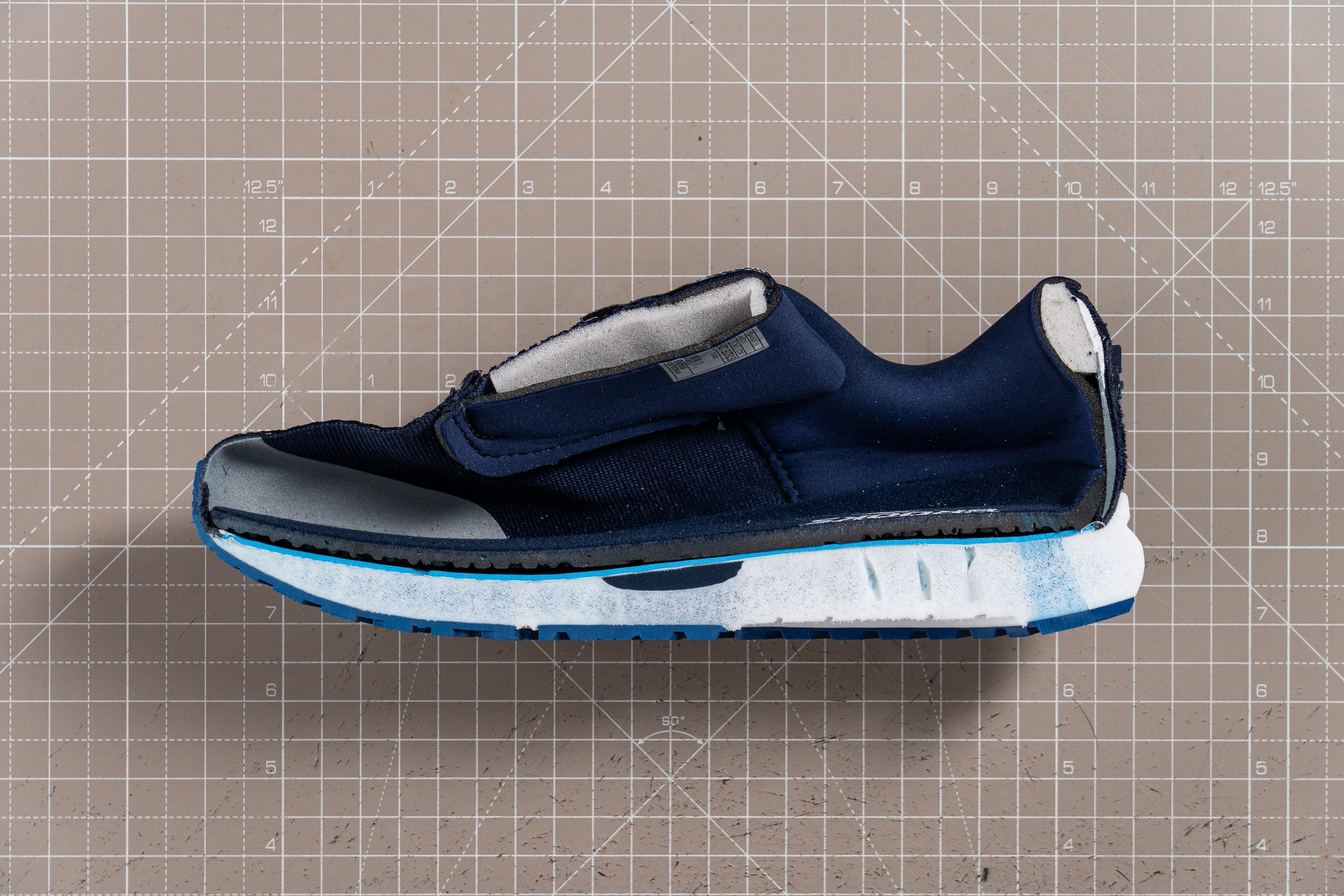
| Beast GTS 24 | 12.7 mm |
| Media | 8.6 mm |
Suavidad de la mediasuela
Sinceramente, estas zapatillas son de todo menos blandas. La verdad es que es algo que nos sorprendió, ya que incluso los modelos que se centran en la estabilidad tienden a ser más bien mullidos, ¡pero la serie Beast GTS pasa del tema!
Con un firme resultado en nuestro durómetro de 30,1 HA y una gruesa suela exterior bajo esta espuma, que las zapatillas se sienten duras es innegable. En unas zapatillas de estabilidad, esta estructura sólida crea una sujeción natural, aunque puede hacer que los corredores a los que les encanta tener nubes bajo los pies pasen de ellas.
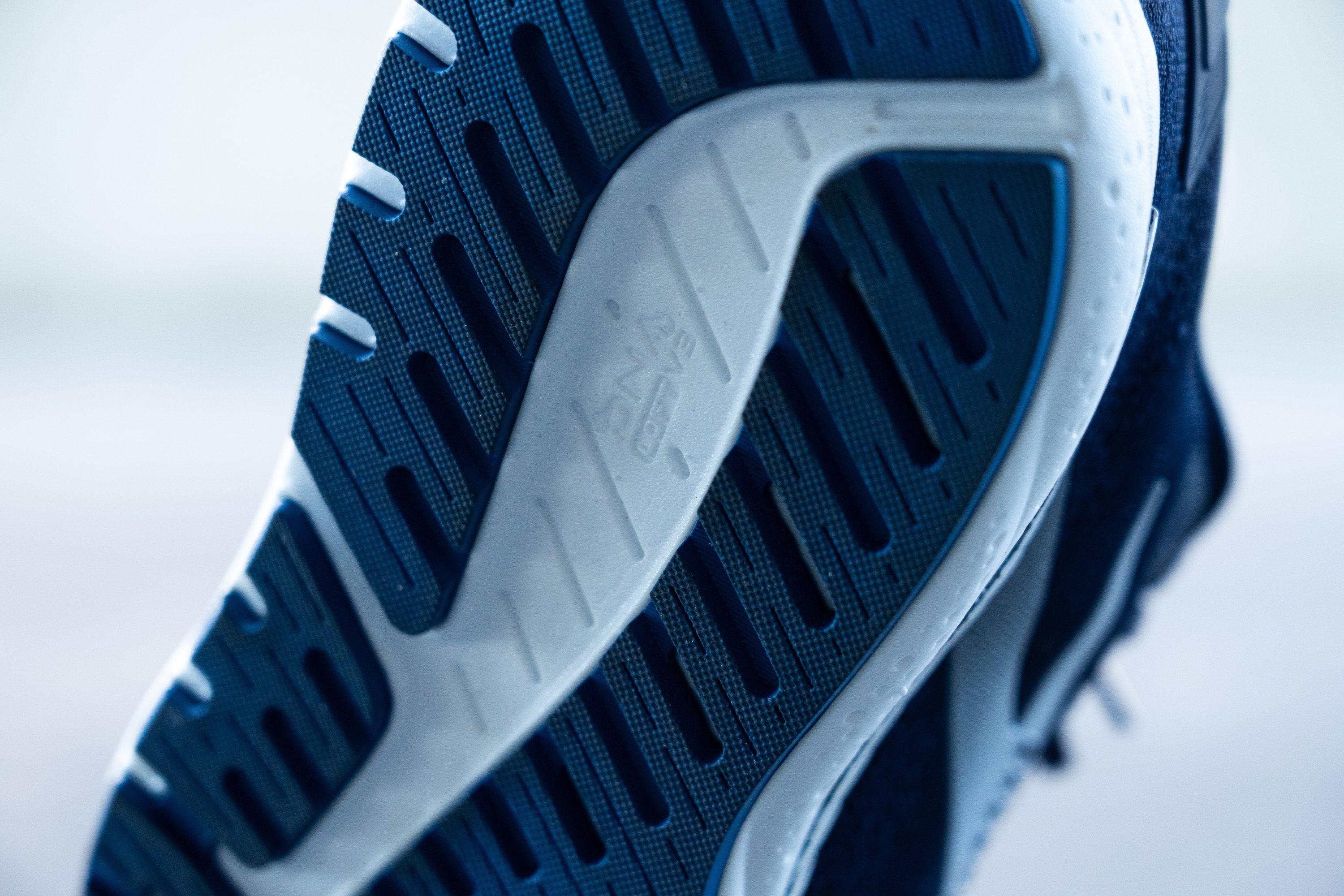
En cuanto a la espuma, Brooks utiliza el compuesto DNA Loft v3, pero ligeramente modificado. Este material están dentro de la gama media de Brooks: no es ni el más ligero ni el más reactivo, pero sí el más duradero y resistente.
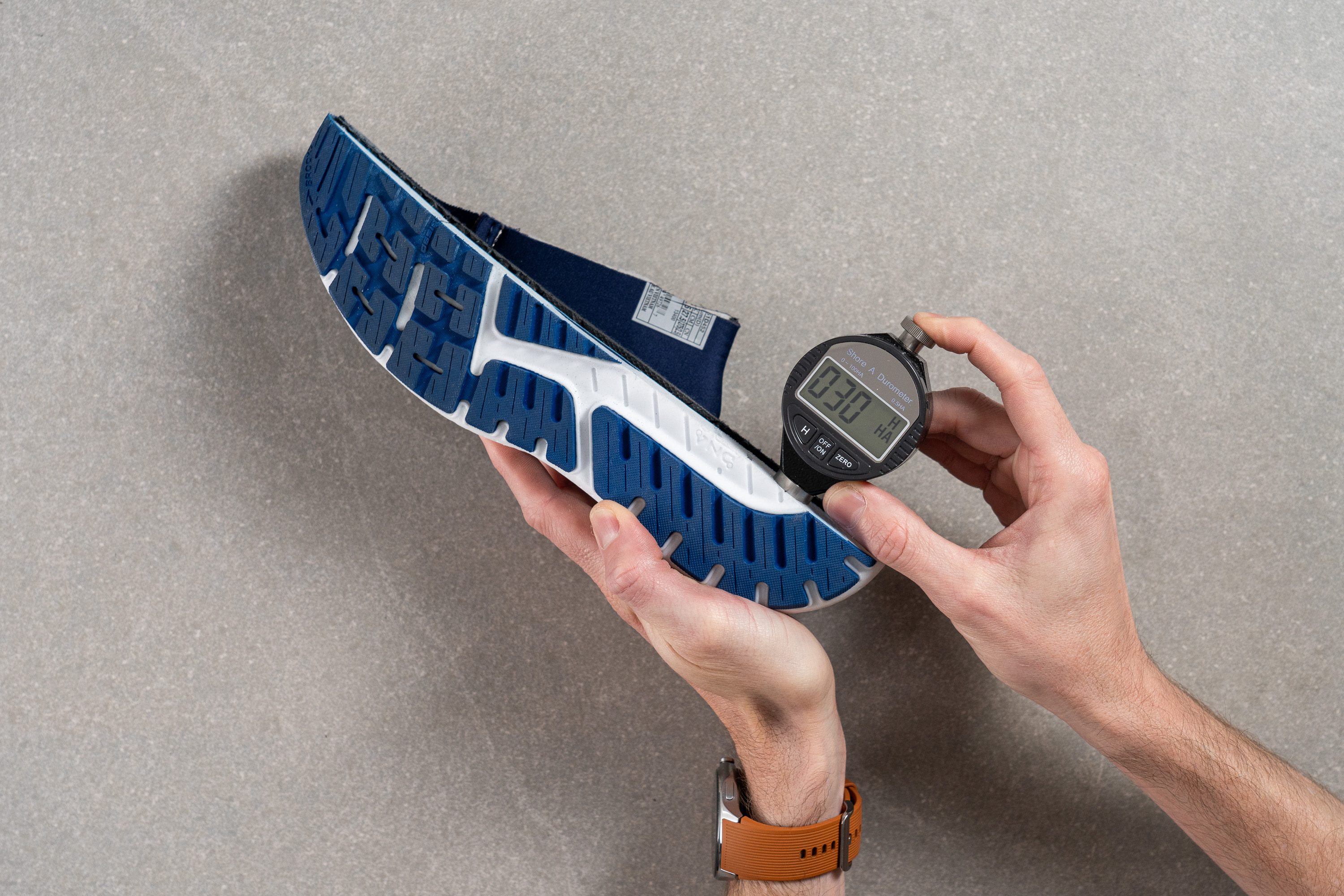
| Beast GTS 24 | 30.1 HA |
| Media | 20.4 HA |
Rocker
Como cabía esperar de unas zapatillas de estabilidad tradicionales diseñadas para ir a trabajar o salir a pasear, casi no tienen rocker. Además, este empieza bastante tarde y solo se inclinan un poquito, pasando apenas los 3 cm.
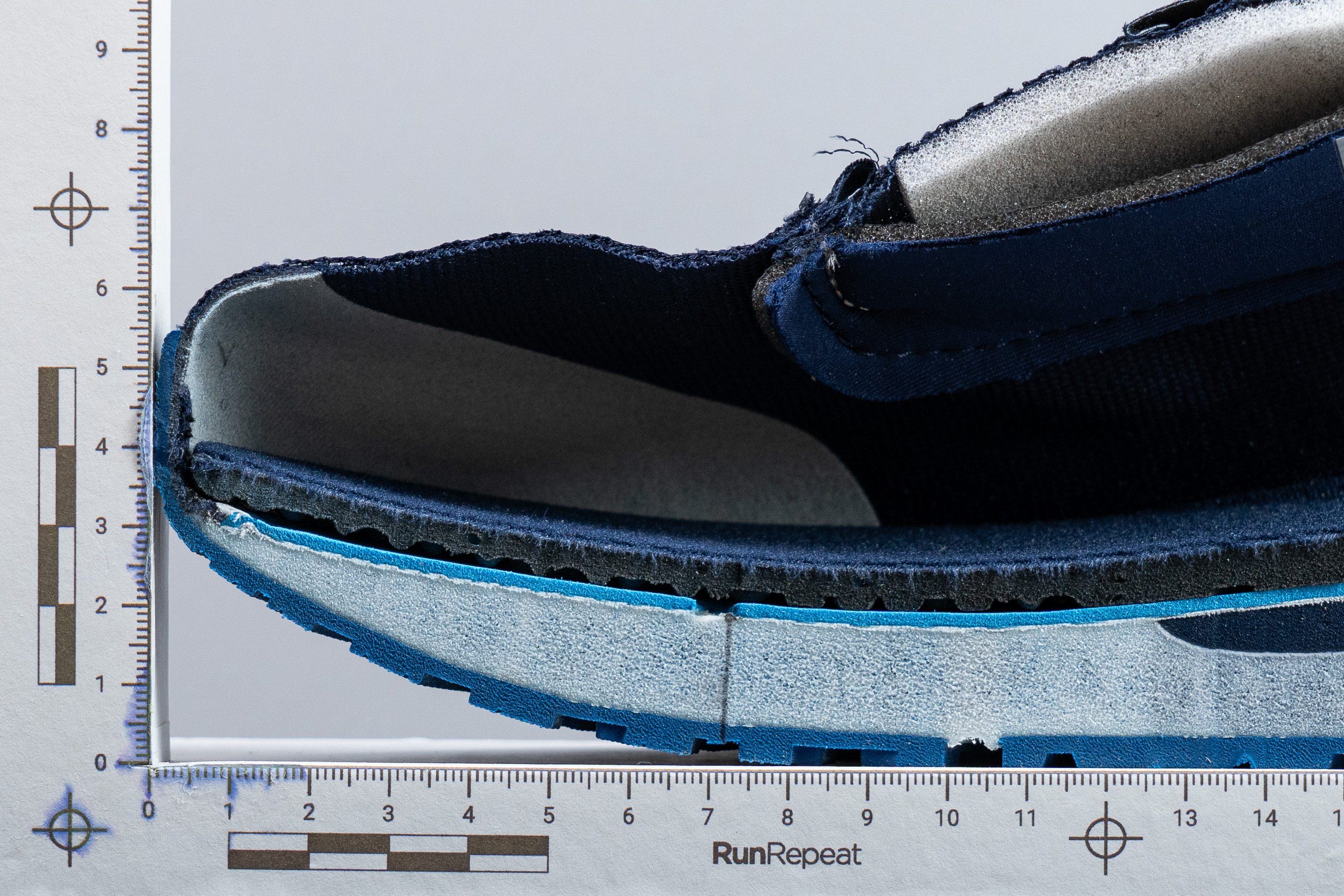
Tallaje y ajuste
Talla
Las Brooks Beast GTS 24 quedan un poco pequeñas (43 votos).
Width / Fit
The room inside the upper is average and should suit most runners well, especially since Brooks offers this shoe in two wide sizes (2E and 4E) in select markets.
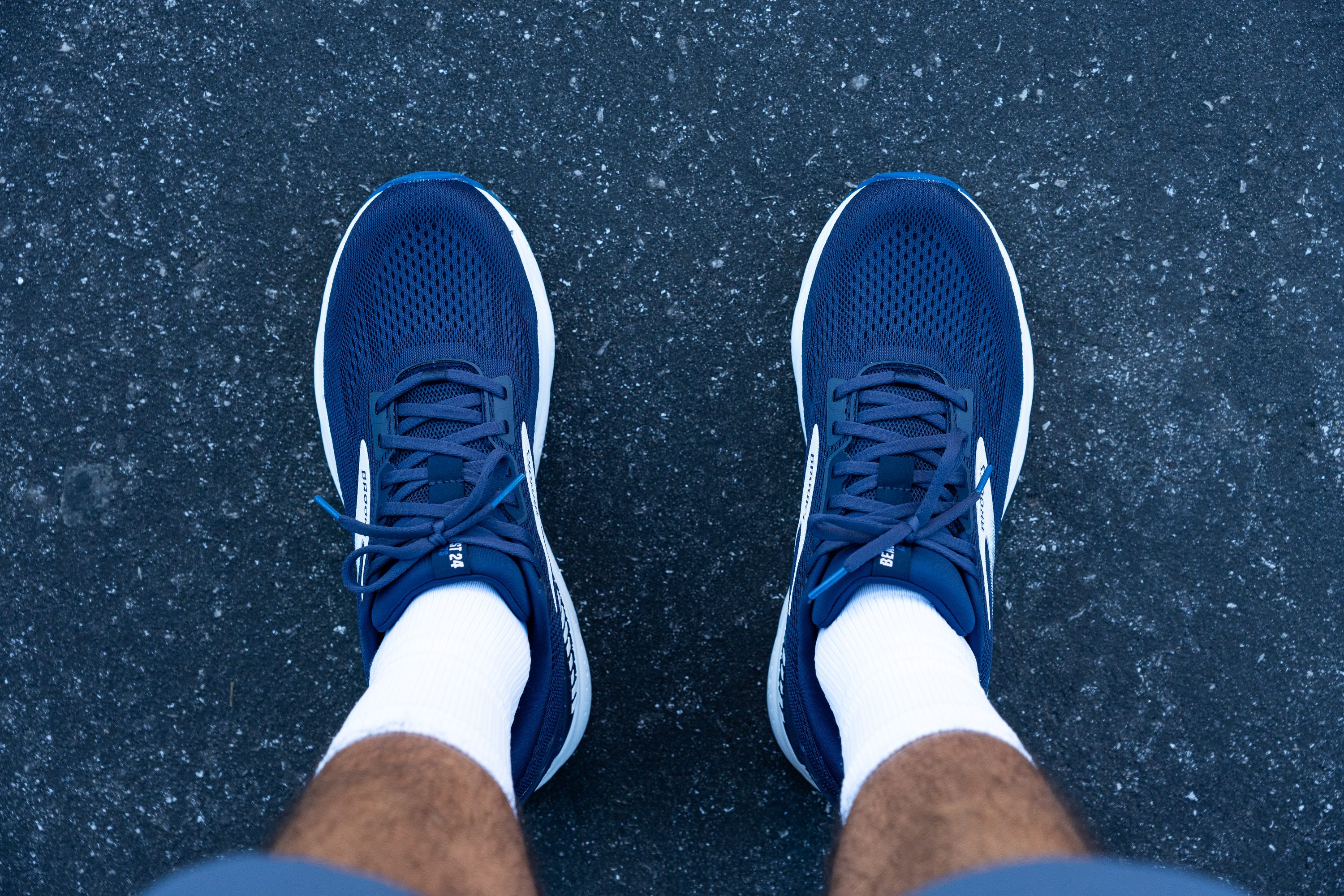
Our initial measurement at the widest part of the upper came in at 99.5 mm, which confirms what we felt during our first tests—a comfortable, well-designed fit that adapts to most foot shapes.

En esta prueba se utiliza una metodología antigua, así que no verás las zapatillas que hemos analizado últimamente en la tabla. Los resultados obtenidos con metodologías distintas no se pueden comparar.
| Beast GTS 24 | 99.5 mm |
| Media | 98.5 mm |
Toebox width
The volume is good enough, as is typical with most Brooks shoes. This brand rarely creates a sense of pressure in the toe area, and we found that the Beast GTS 24 maintains that easy, spacious fit—exactly what we hoped for.
Moving back to the width, in the toe area, we measured 78.7 mm, which matches our experience. It feels neither wide nor narrow—just an average, balanced fit that offers solid comfort without excess room.
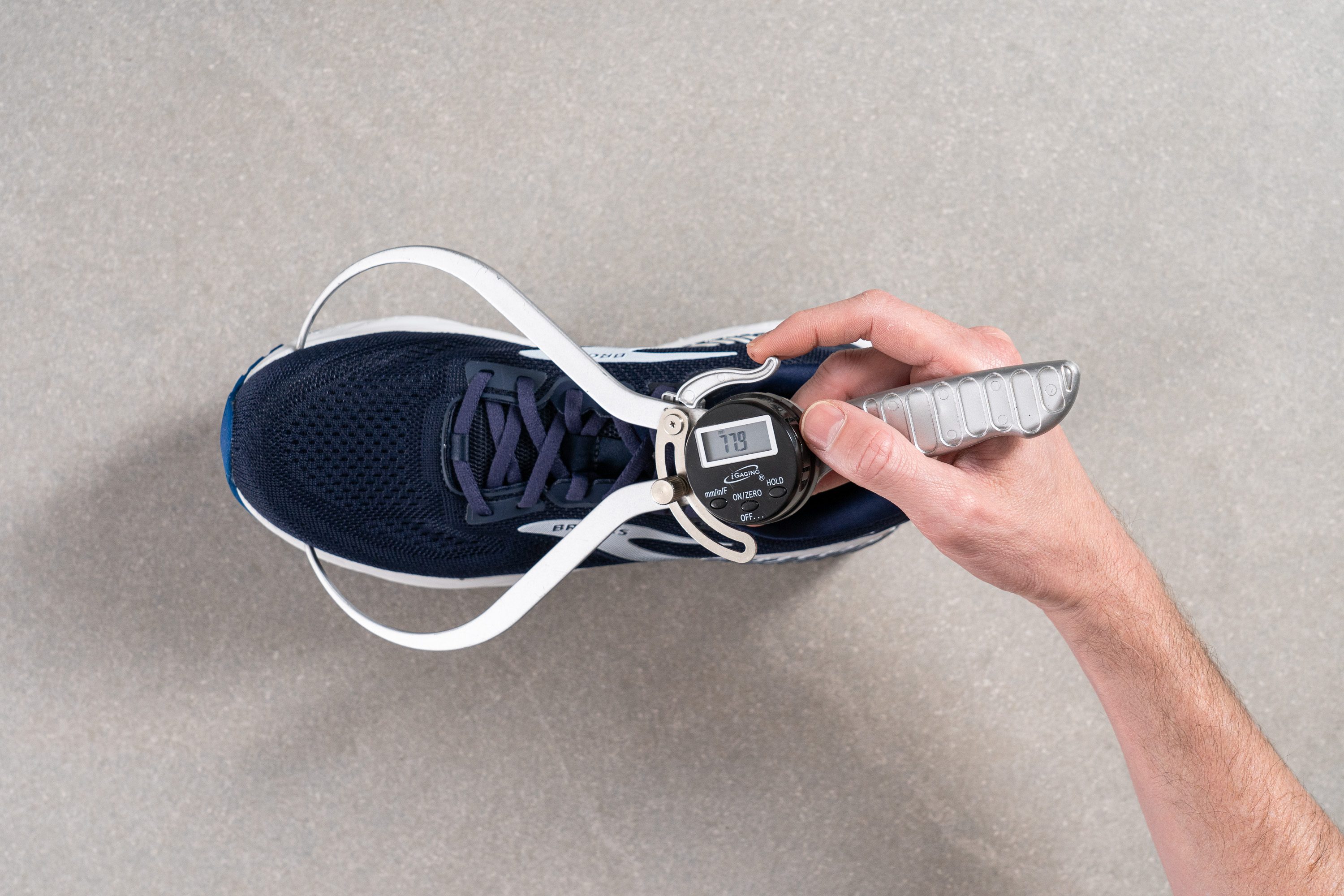
En esta prueba se utiliza una metodología antigua, así que no verás las zapatillas que hemos analizado últimamente en la tabla. Los resultados obtenidos con metodologías distintas no se pueden comparar.
| Beast GTS 24 | 77.9 mm |
| Media | 78.4 mm |
Tracción / Agarre
Traction test
La tracción no es la característica más destacada de las Beast GTS 24. En nuestra prueba de tracción, se llevaron un bajo 0,29, así que están en la cola de nuestra clasificación. En superficies secas no tienen problema, pero cuando empieza a llover, creemos que es mejor que utilices algo más seguro, como las ASICS Superblast 2.
| Beast GTS 24 | 0.29 |
| Media | 0.48 |
Diseño de la suela exterior
En nuestra experiencia con los modelos de Brooks diseñados para la estabilidad, la marca suele ir a lo seguro cuando se trata de la suela exterior. En este caso, no tenemos ninguna queja sobre la cobertura de caucho, ya que protege eficazmente todas las zonas de mayor desgaste.
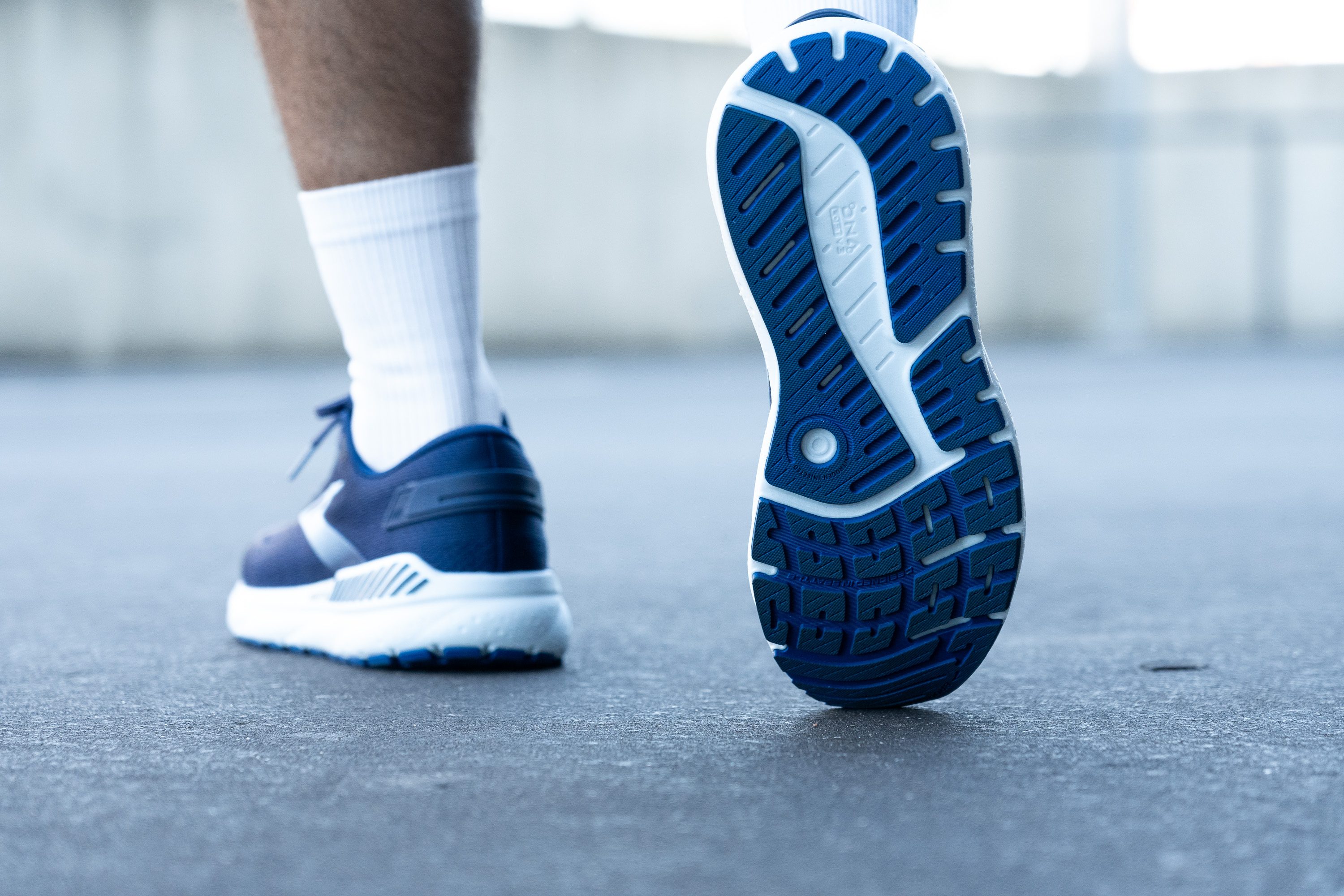
Flexibilidad / Rigidez
Nuestra prueba de flexión, que requirió 13,0 N de fuerza, reveló un sorprendente contraste con la rigidez torsional (4/5) y la rigidez del contrafuerte del talón (5/5) de estas zapatillas: ¡las Beast GTS 24 son flexibles a lo largo!
Este nivel moderado de flexibilidad longitudinal hace que sean más cómodas sin tener que sacrificar la estabilidad. Si estás buscando unas zapatillas estables y cómodas que te sirvan tanto para trabajar como para comer, aquí tienes una opción sólida.
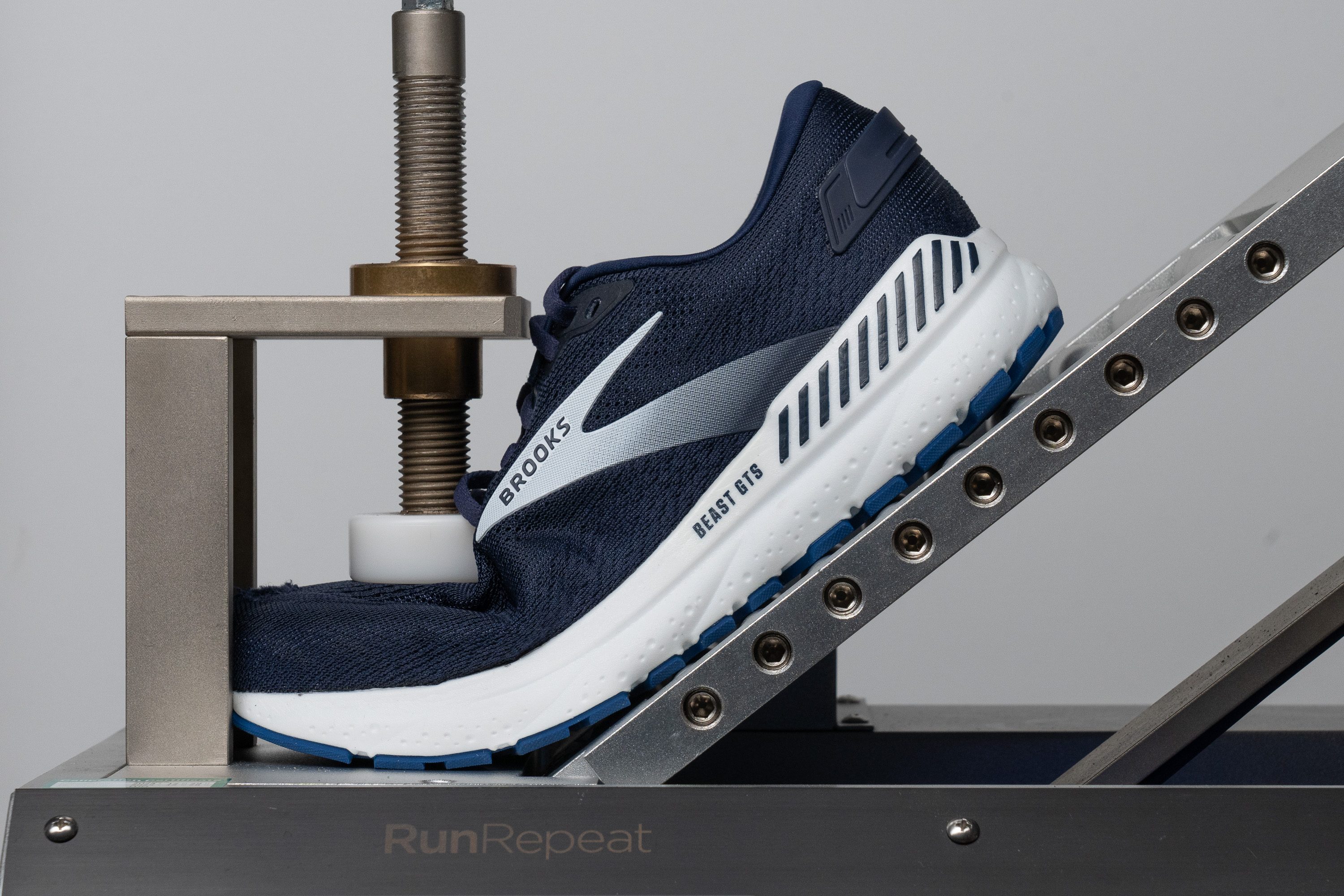
| Beast GTS 24 | 13.0N |
| Media | 15.3N |
Peso
Con sus 357 g, las Beast empiezan con B de barca, ya que son unas de las zapatillas más pesadas que hemos analizado en nuestro laboratorio, superando incluso a sus predecesoras. Y sí, es lo que hay, ¡el peso se nota en cada paso!
| Beast GTS 24 | 12.6 oz (357g) |
| Media | 9.3 oz (264g) |
Transpirabilidad
Nada más ver las Brooks Beast GTS 24, pensamos que serían de lo mejor en transpirabilidad, ya que tienen la zona de los dedos llena de agujeritos. Pero nuestra máquina de humo no tardó nada en decirnos que nos estábamos viniendo arriba...
Esta falta de ventilación se debe, principalmente, a que Brooks decidió centrarse en la comodidad y en la estabilidad. Diseñó un upper mullido que se centra en mantener la estructura, como pudimos comprobar con nuestra linterna LED: la marca utiliza una malla de ingeniería de doble capa que limita la circulación del aire.
Gracias a nuestro microscopio, descubrimos que los agujeritos para que el aire entrase y saliese estaban claramente obstruidos por esta segunda capa. Esto nos explicó al instante por qué estas zapatillas no conseguían expulsar todo el humo, así que no pudimos darles más que un 2/5 en transpirabilidad.

Eso sí, lo que a las Beast GTS 24 les falta en transpirabilidad, lo compensan siendo tan cómodas como un par de nubes, ¡sobre todo cuando hace frío!
El upper está generosamente acolchado en las zonas clave, y la calidad de fabricación cumple las expectativas de unas zapatillas caras. Pero bueno, ¡mejor no te las pongas en verano!
| Beast GTS 24 | 2 |
| Media | 3.7 |
Estabilidad
Prueba de estabilidad lateral
Todas las ediciones de Brooks GTS ofrecen una estabilidad excepcional, y las Beast GTS 24 no es una excepción. En nuestra experiencia, destacan por mantener el pie centrado y evitar los movimientos laterales, sobre todo en la cara interna.
Su punto clave es la tecnología GuideRails, pero tienen más características de estabilidad: un contrafuerte del talón sólido, refuerzos en el upper, y una pieza de espuma única bajo el arco plantar que centra el pie sutilmente para que la pisada esté llena de equilibrio y control.
Rigidez torsional
Diseñar unas zapatillas de running estables con una baja rigidez torsional no tendría ningún sentido, ya que sería contraproducente. Lo bueno es que, si eliges las Beast GTS 24, su estructura rígida (4/5) hace que cesen las fuerzas laterales, que aunque no molesten a los corredores neutros, sí que suponen un reto para los que necesitan esa estabilidad extra.
| Beast GTS 24 | 4 |
| Media | 3.5 |
Rigidez del contrafuerte del talón
El contrafuerte del talón de las Beast GTS 24 no ha cambiado desde el año pasado. Tiene una estructura rígida como el hierro que les ofrece mucha sujeción a los talonadores, así que se ha llevado un 5/5 en nuestra prueba de rigidez torsional.
Con esto en mente, Brooks buscó equilibrar este muro hecho contrafuerte con mucho acolchado en la zona del tendón de Aquiles, lo que ayuda a compensar posibles molestias.
| Beast GTS 24 | 5 |
| Media | 2.9 |
Anchura de la mediasuela - antepié
Hemos dicho antes que, sin duda, estas zapatillas están diseñadas pensando en los talonadores, y sus dimensiones lo confirman. En el antepié, nuestro calibre marcó 116,8 mm, que nos parece un poco estrecho para unas zapatillas de estabilidad.
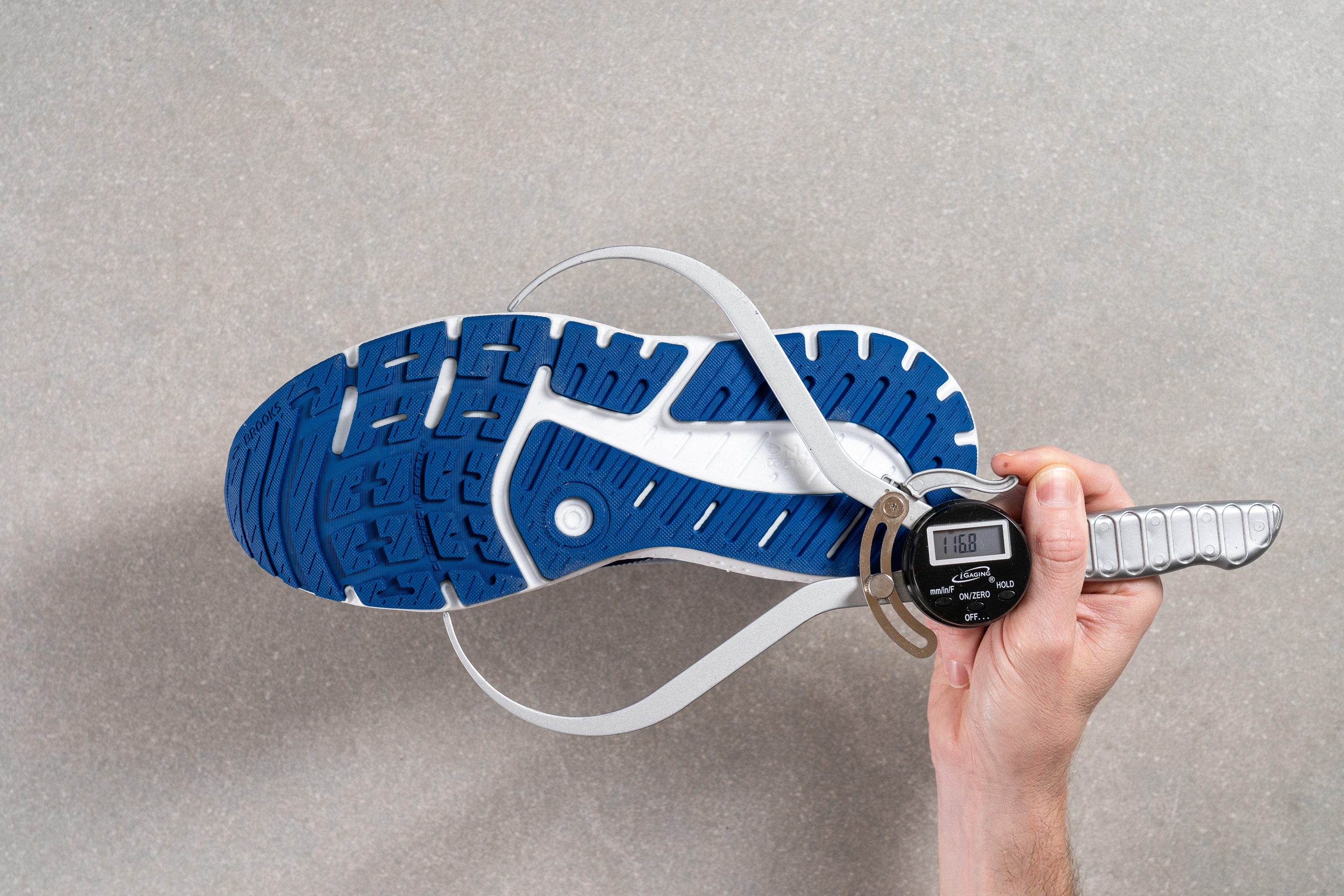
| Beast GTS 24 | 116.8 mm |
| Media | 114.4 mm |
Anchura de la mediasuela - talón
El retropié ya es otra historia. Con sus 101,9 mm, es anchísimo, confirmando de nuevo que a los talonadores les van a encantar estas zapatillas.
Ahora entendemos el razonamiento de la marca: como este modelo es pesado, Brooks tuvo que elegir dónde estrechar su mediasuela, y al final reducir la plataforma de aterrizaje en la zona del talón cuando este par está diseñado para los talonadores no tiene ningún sentido, ¿verdad?
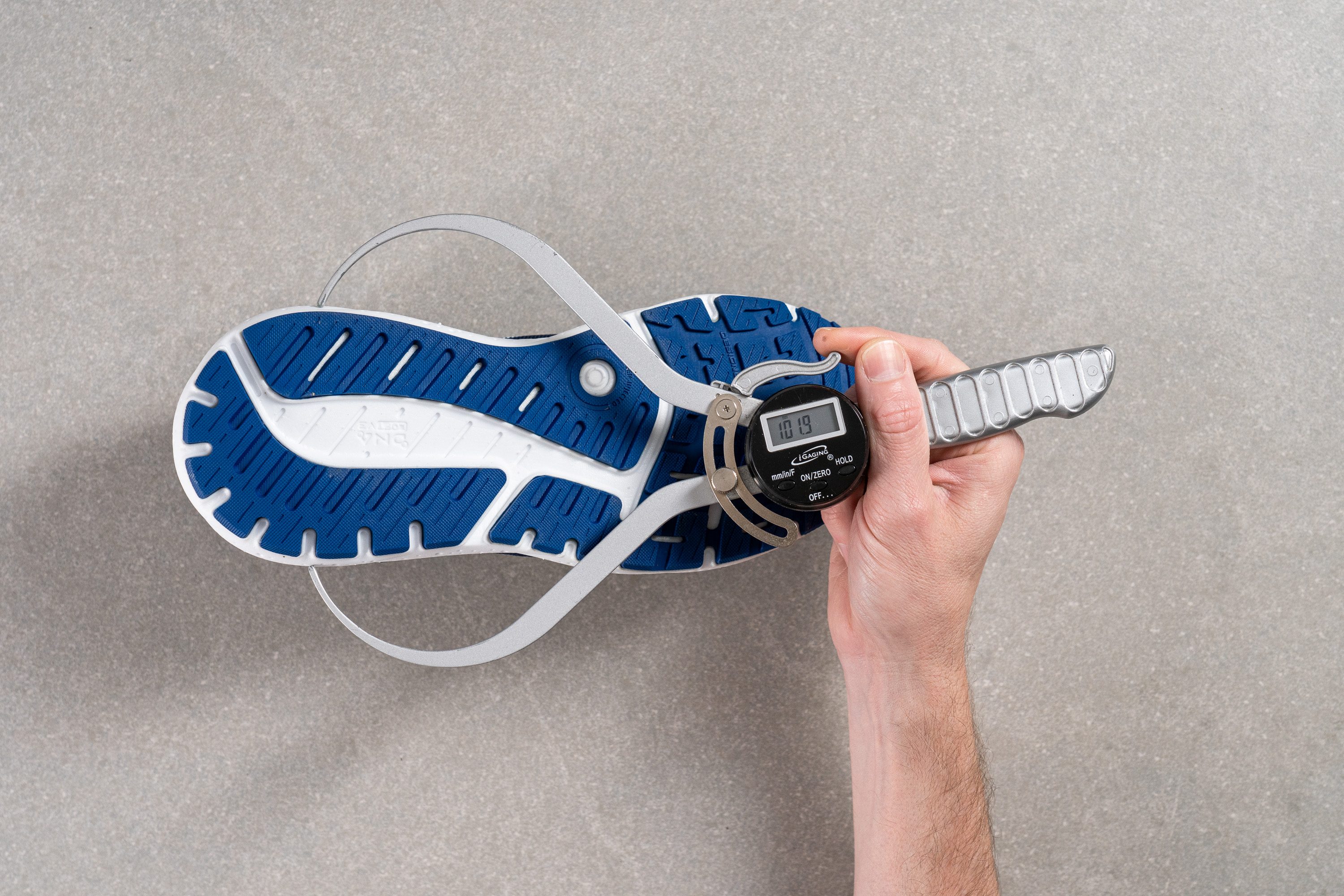
| Beast GTS 24 | 101.9 mm |
| Media | 90.7 mm |
GuideRails
Una característica clásica de los modelos Brooks GTS (Go-To Support) es su tecnología GuideRails, un nombre elegante para su sistema de sujeción que mantiene los pies en su sitio y pegaditos al suelo. Aunque hay veces que puede sentirse más intrusivo de lo que nos gustaría, lo cierto es que funciona bien, así que no nos extraña nada que Brooks presuma de su nombre, poniéndolo en negrita y destacándolo en cada par de zapatillas.

Durabilidad
Durabilidad de la parte delantera
Sinceramente, la malla de las Beast GTS 24 tampoco cumple nuestras expectativas en cuanto a durabilidad. Tras nuestra prueba, creemos que carece de la resistencia necesaria como para aguantar a largo plazo.
Las sometimos a nuestra prueba Dremel, que siempre dura lo mismo (5 segundos) y en la que siempre utilizamos la misma fuerza (3,2 N). Por desgracia, las Beast GTS 24 se llevaron un decepcionante 2/5, así que están a la cola en la escala de durabilidad de Brooks.
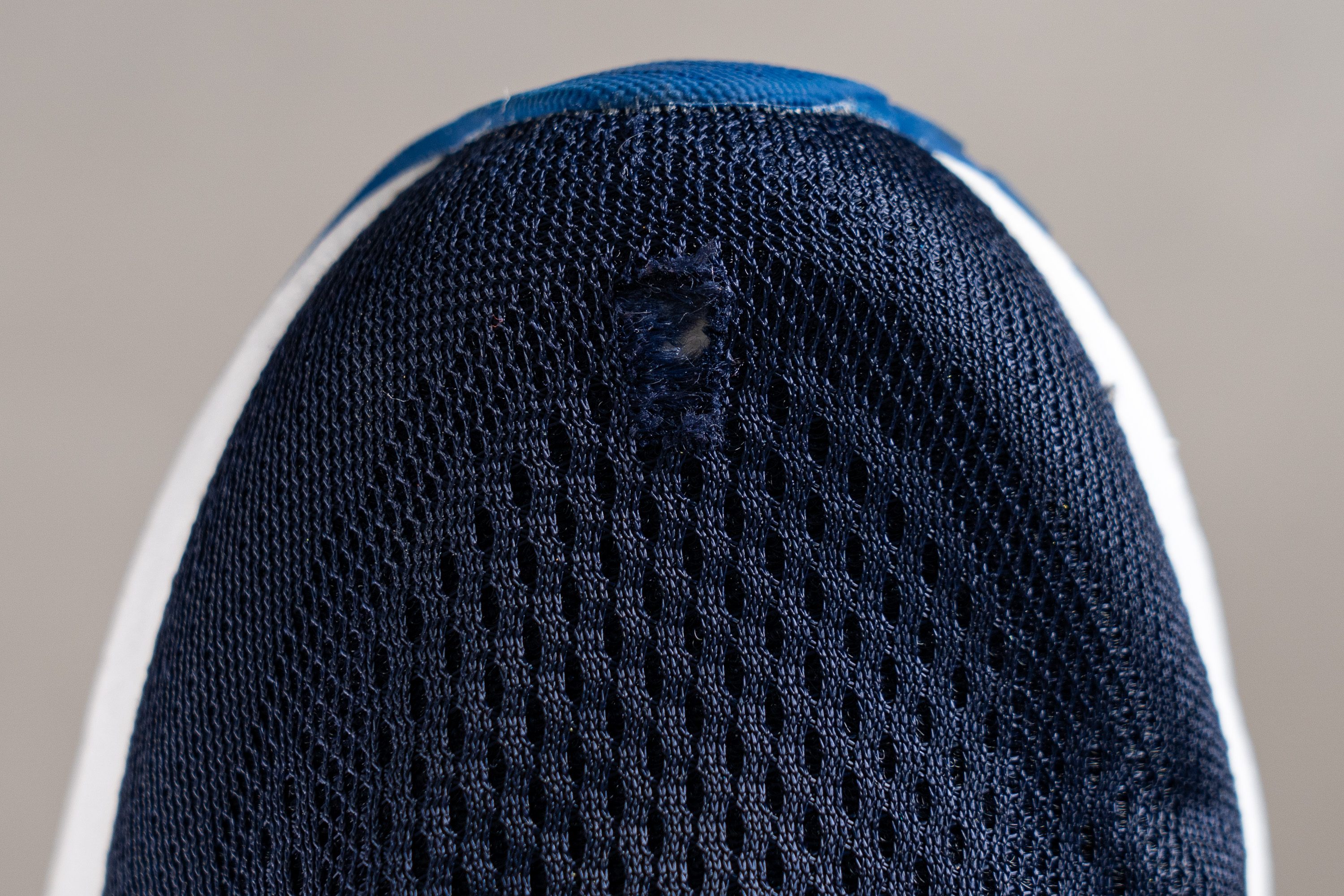
| Beast GTS 24 | 2 |
| Media | 2.6 |
Durabilidad del acolchado del talón
El talón lo hace un poquito mejor, pero no tanto como para volvernos locos. Se llevó un 3/5 en esta prueba, que al final es el estándar.
En nuestra opinión, es una puntuación adecuada para estas zapatillas, sobre todo si tenemos en cuenta que los modelos diseñados pensando en la comodidad suelen tener una peor durabilidad. ¿Por qué? Pues porque el acolchado que tienen en el cuello el talón es más blando y lujoso. La amortiguación más gruesa suele sacrificar la durabilidad, pero las Beast GTS 24 aguantaron bastante bien.

| Beast GTS 24 | 3 |
| Media | 3.4 |
Dureza de la suela
Siguiendo nuestra experiencia con los modelos de Brooks diseñados pensando en la estabilidad, muchas veces la marca va a lo segundo con la suela exterior, optando por un caucho duradero que ofrece un agarre decente, pero que está diseñado para durar prácticamente para siempre.

Nuestro durómetro confirmó nuestras expectativas. Marcó 85,5 HC, así que nos quedó claro que el material es duro y resistente; por lo tanto, en teoría debería estar listo para enfrentarse a cualquier superficie sin desgastarse demasiado.
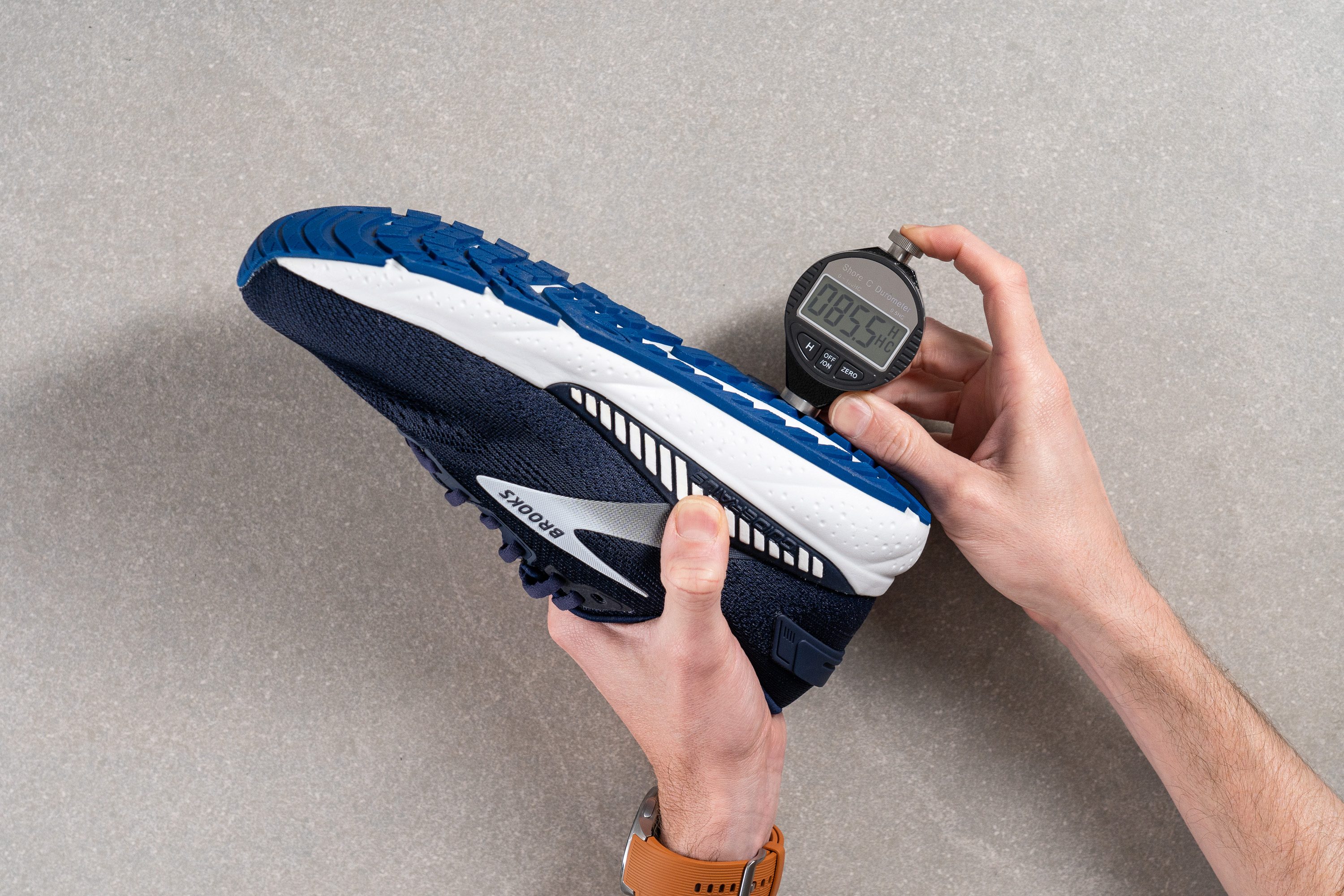
| Beast GTS 24 | 85.5 HC |
| Media | 79.2 HC |
Durabilidad de la suela
Para esta prueba volvimos a coger nuestro Dremel, pero esta vez lo pusimos a 10K RPM. La suela exterior de las Beast GTS 24 aguantó como una campeona, justo lo que nos esperábamos.
Cuando terminamos la prueba y medimos los daños, vimos que eran de solo 0,7 mm, ¡un resultado estupendo! Según nuestra experiencia, la mayoría de las zapatillas de running terminan con daños más profundos, así que esta durabilidad nos parece una maravilla.
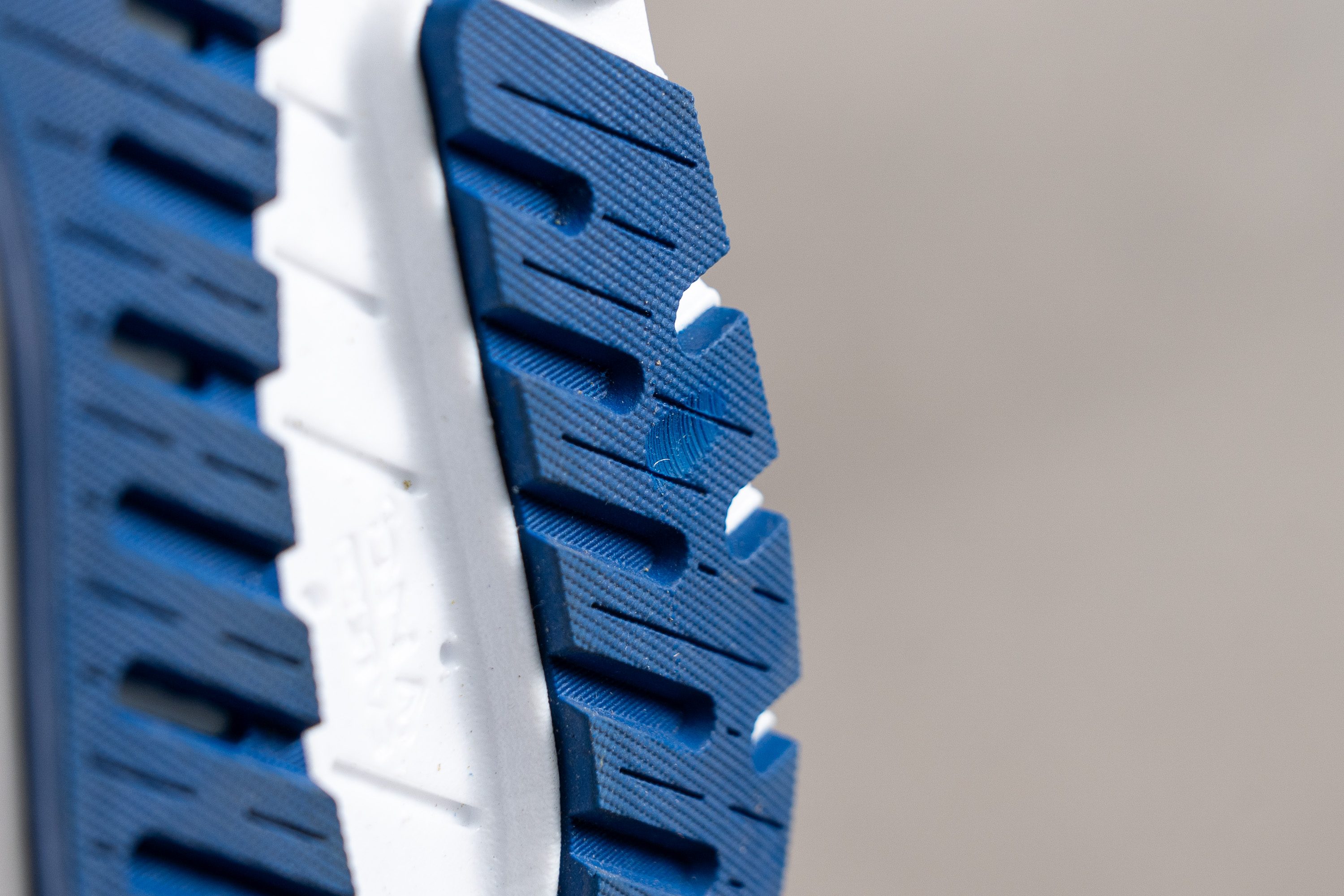
| Beast GTS 24 | 0.7 mm |
| Media | 1.1 mm |
Grosor de la suela
Déjanos decirte una cosa: si estabas buscando una suela exterior prácticamente indestructible, ¡la has encontrado! Con 4,8 mm de grosor, la suela exterior de estas zapatillas está hecha para durar. ¡Menudo tanque!
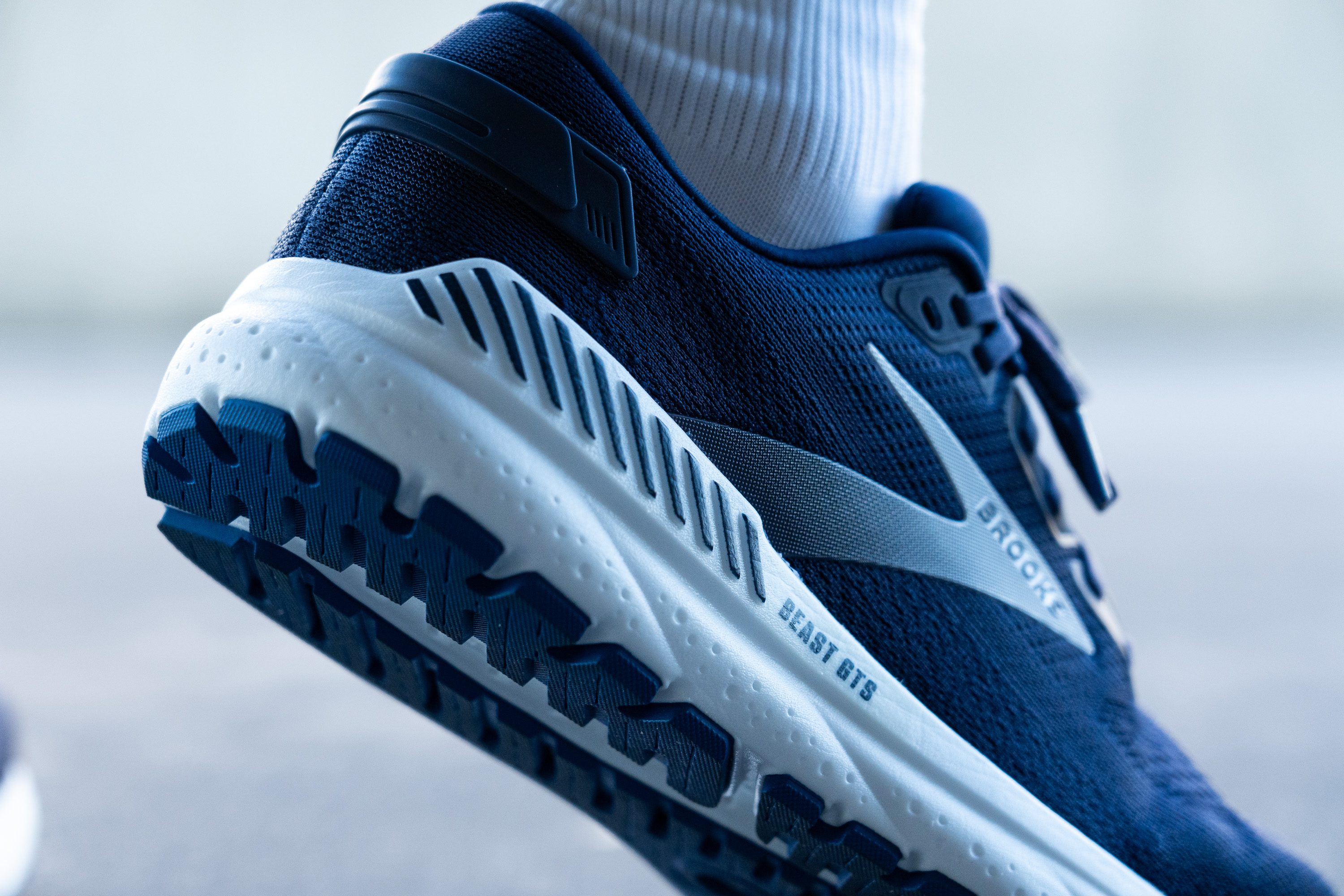
Nos esperamos que vaya a durar más de 1000 kilómetros, ¡hasta para los corredores más pesados! Eso sí, este caucho tan grueso también tiene sus inconvenientes: la pisada es demasiado firme y no sentimos nada el suelo bajo los pies.

| Beast GTS 24 | 4.8 mm |
| Media | 3.2 mm |
Varios
Grosor de la plantilla
La plantilla de las Beast GTS 24 destaca por ser una de las más gruesas que hemos visto en nuestro laboratorio, con 6,5 mm.
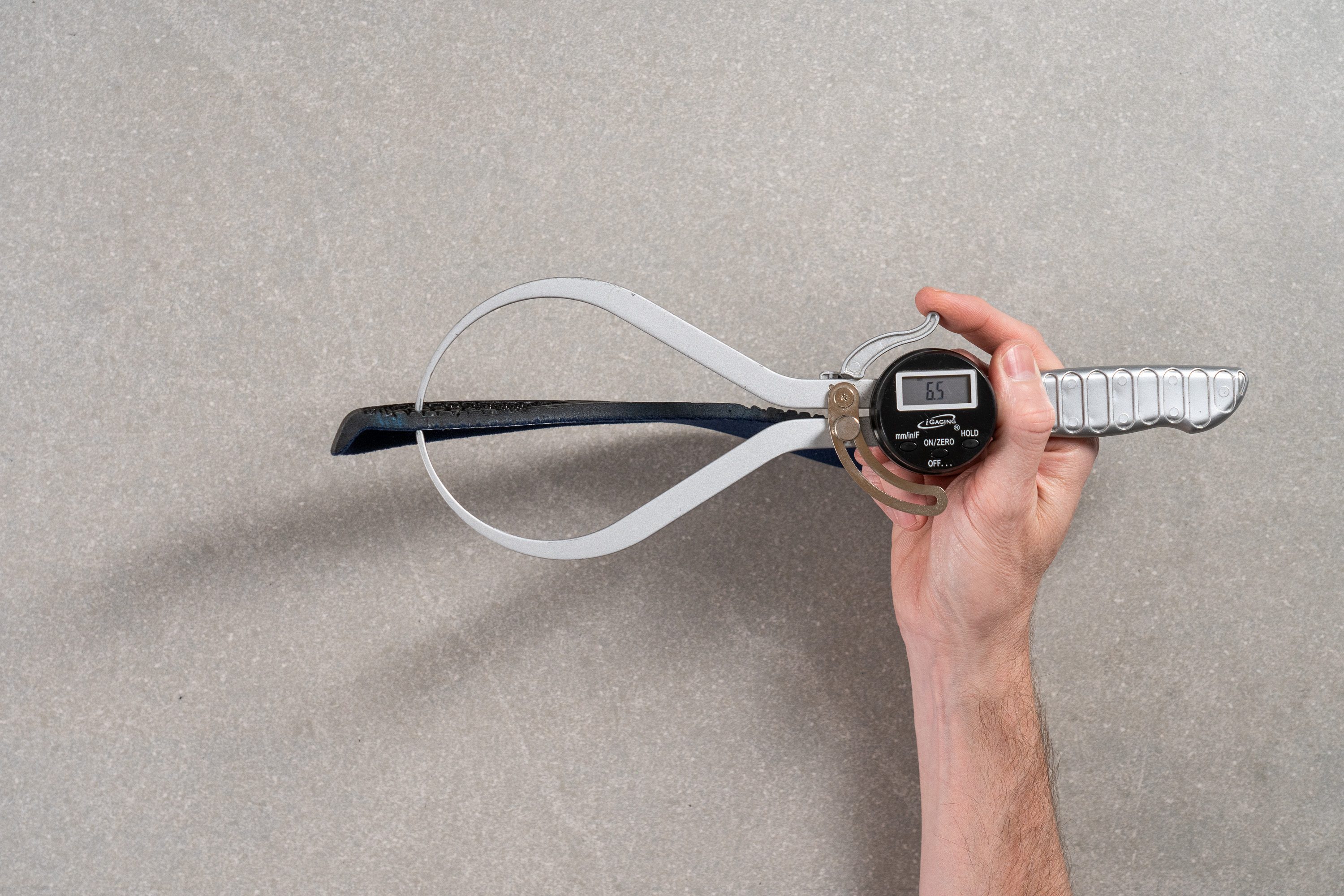
| Beast GTS 24 | 6.5 mm |
| Media | 4.5 mm |
Plantilla extraíble
No tuvimos problemas para quitarles la plantilla. Eso sí, si decides hacerlo, perderás el diseño exclusivo creado para este modelo, que presenta texturas variadas y una sujeción mejorada, una mejora importante con respecto a las plantillas básicas de EVA que solemos ver en las zapatillas de running.
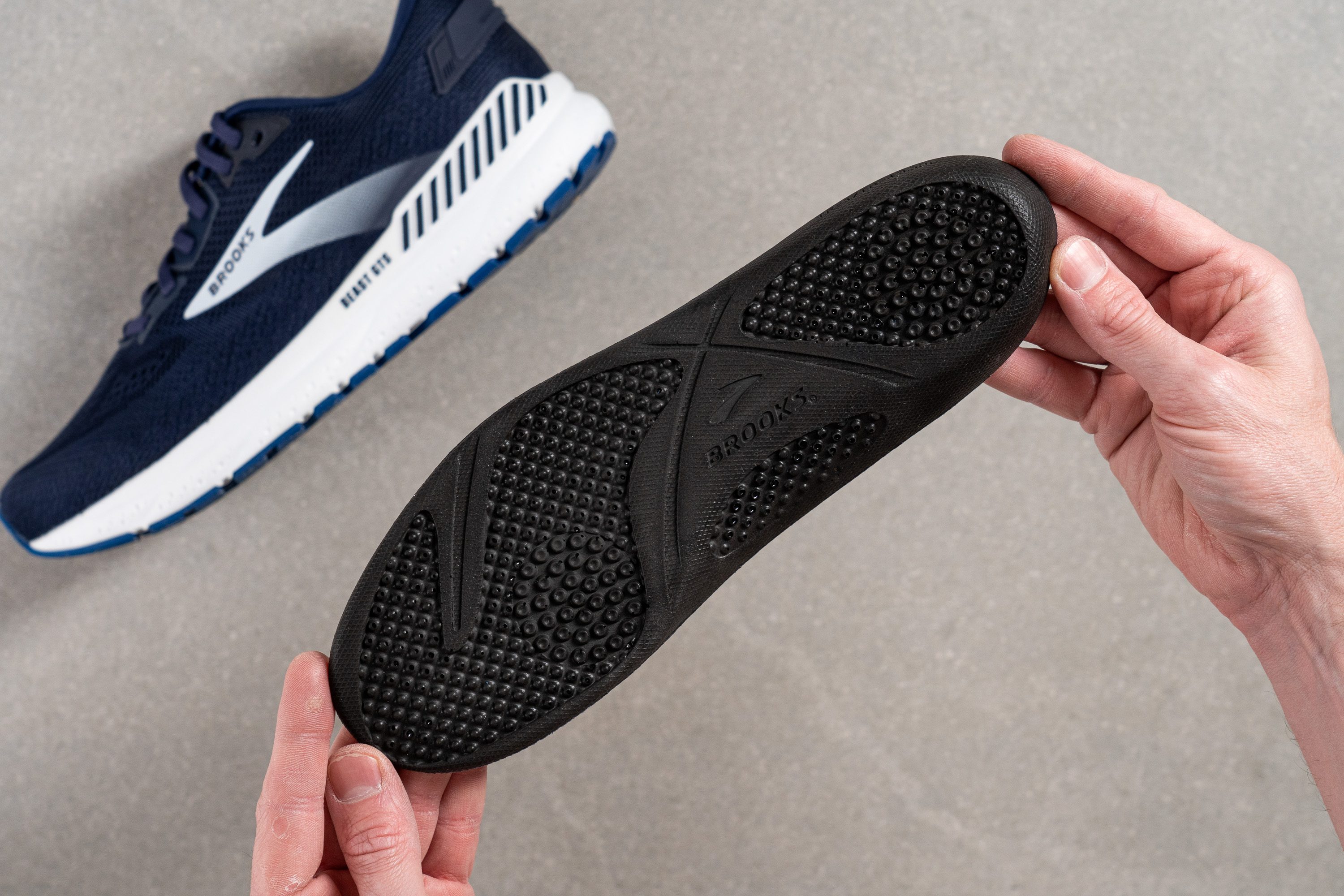
| Beast GTS 24 | Sí |
Rigidez de la mediasuela en frío (%)
La DNA Loft v3 es una espuma EVA supercrítica, lo que significa que su núcleo es etilvinilacetato, un material que, según nuestra experiencia, suele endurecerse bastante con el frío.
Después de meter las Beast GTS 24 unos 20 minutos en nuestro congelador, el durómetro marcó 35,0 HA, lo que supone un aumento en rigidez del 16,2 %.
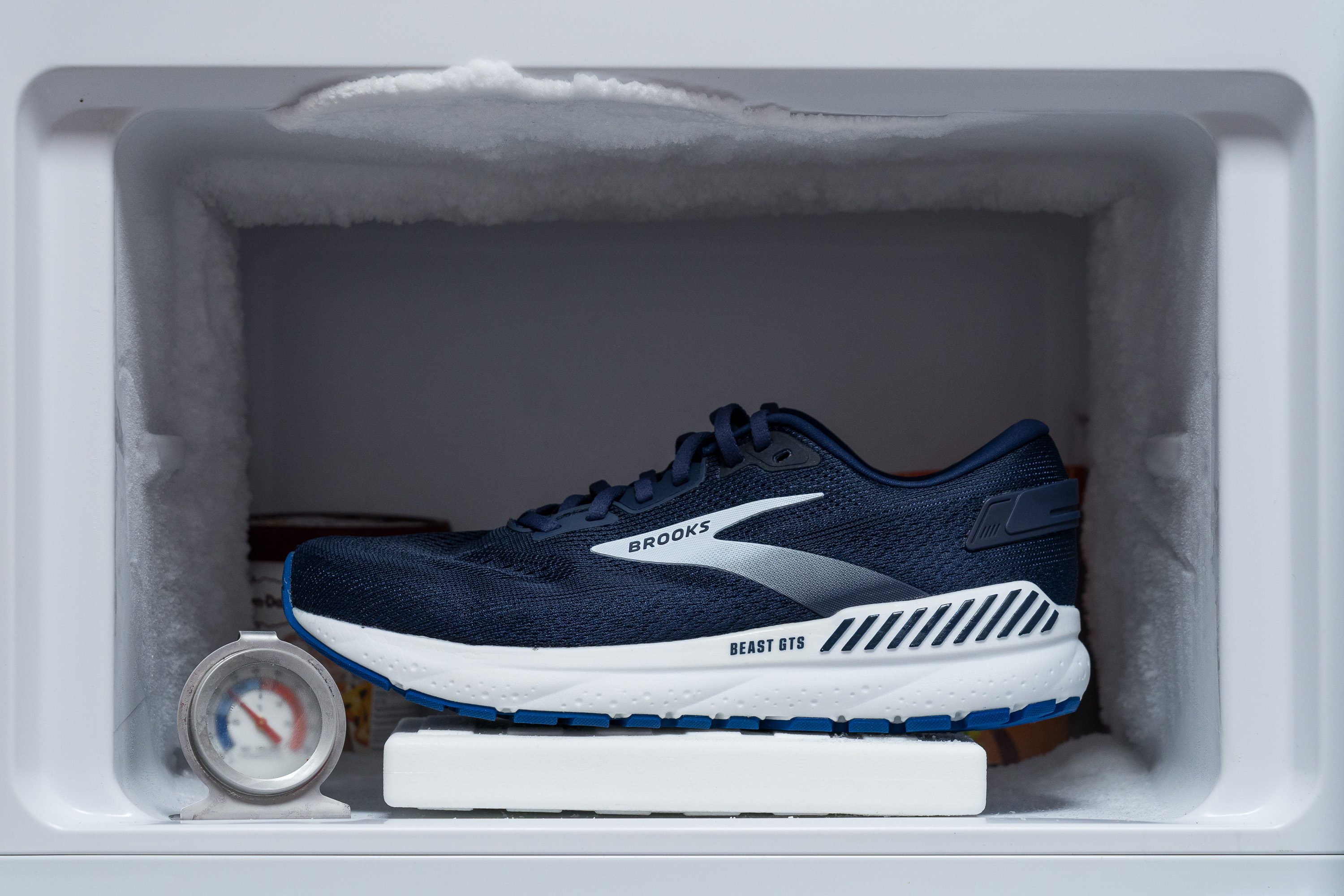
| Beast GTS 24 | 16% |
| Media | 24% |
Elementos reflectantes
Las Beast GTS 23 tienen una pequeña pero importantísima pieza reflectante en el talón que hace que se te vea mejor si corres por la noche. ¡Pero la v24 no tiene ni una! Así que creemos que han dado un paso atrás.
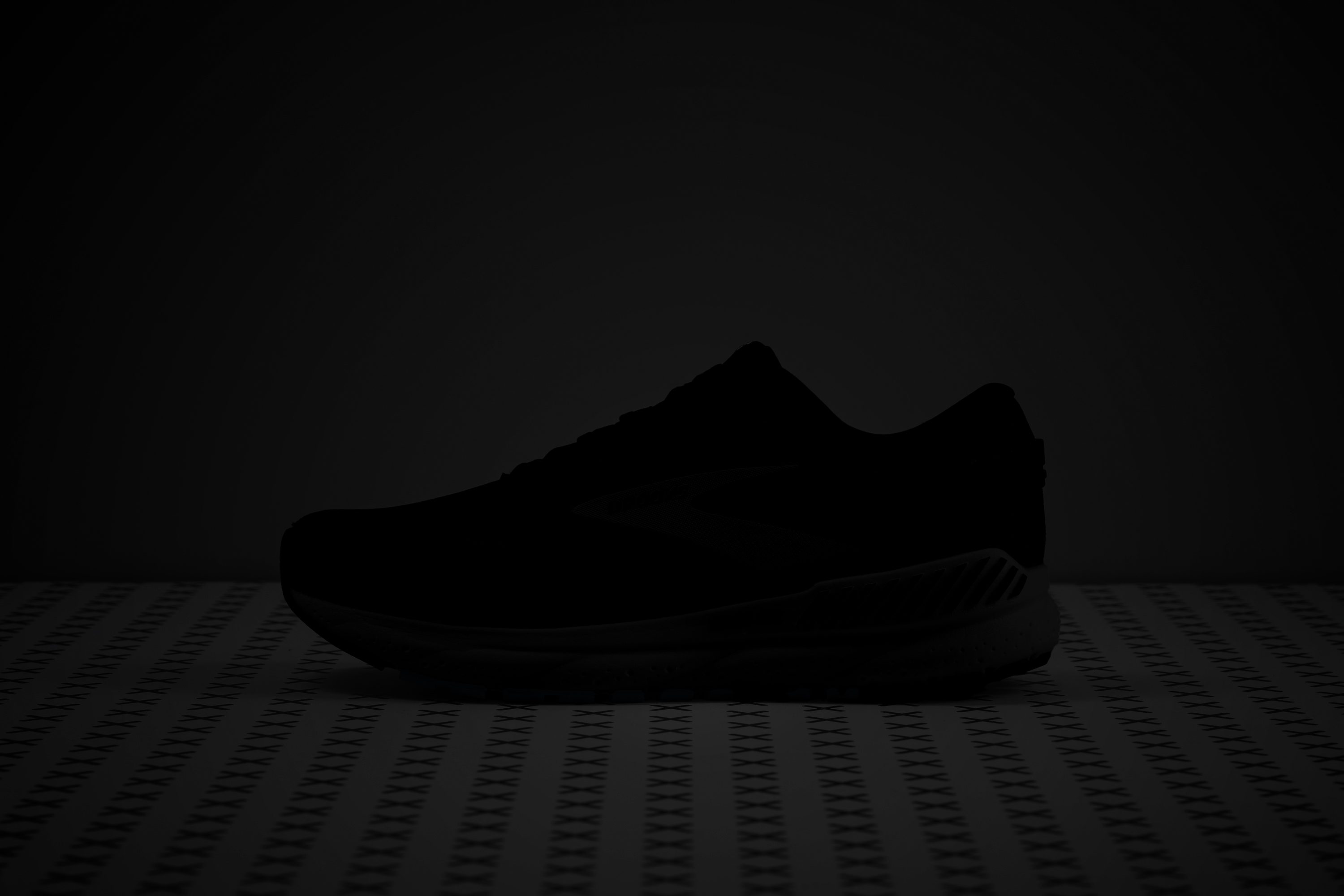
| Beast GTS 24 | No |
Acolchado de la lengüeta
Es cierto que estas zapatillas pesan un quintal, pero también son comodísimas. Gran parte de ese confort está en su lengüeta, que tiene un grosor de 9,6 mm, y que cuenta con una mullida capa de espuma en el medio de dos piezas más finitas. La verdad es que la sensación es maravillosa.
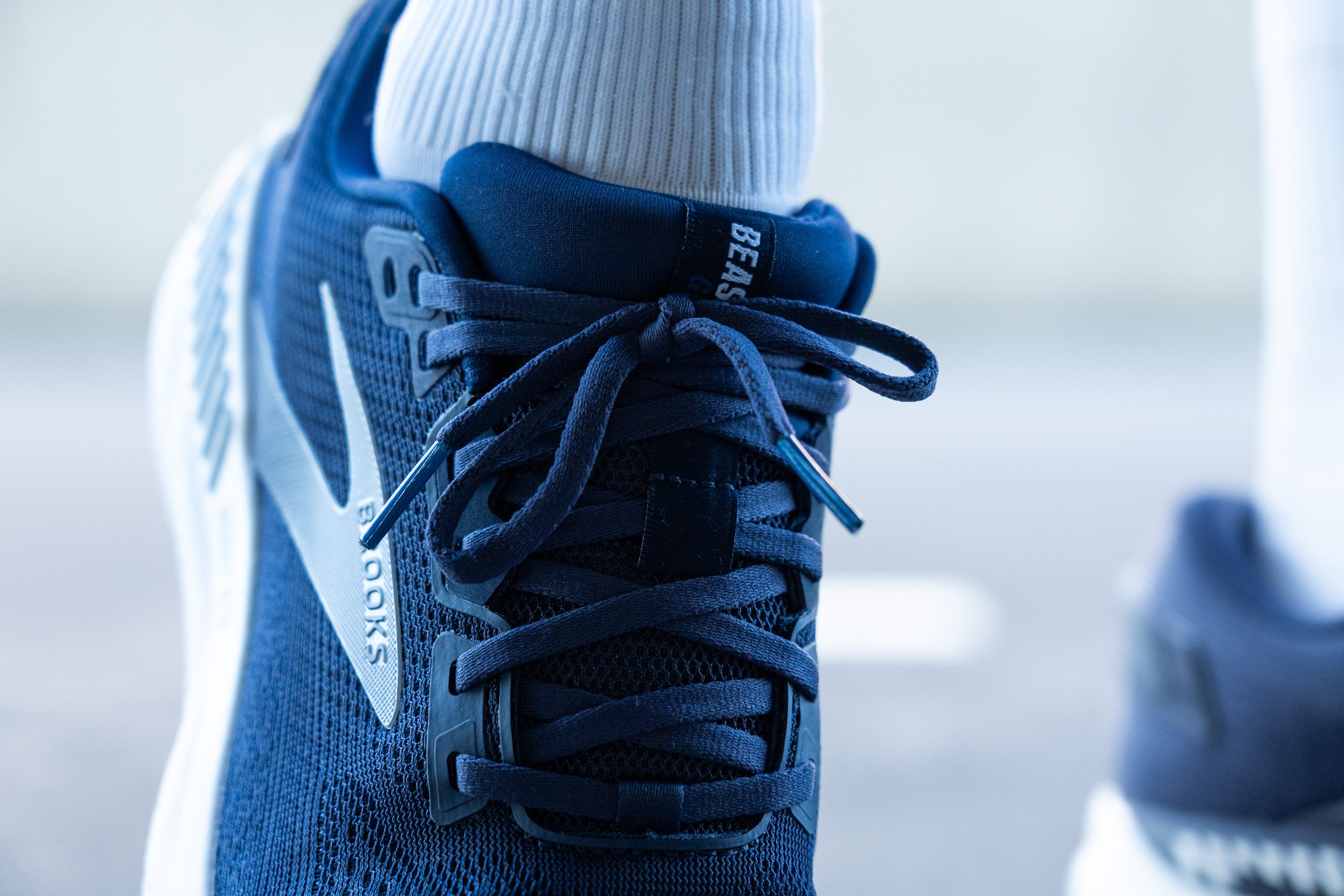
Estamos contentos de que Brooks haya utilizado 2 lacitos en la lengüeta y no 1. Este detalle, combinado con el refuerzo de un solo lado, mantiene la lengüeta perfectamente en su sitio, garantizando un ajuste ceñido que hace que no se mueva al correr.

| Beast GTS 24 | 9.6 mm |
| Media | 5.8 mm |
Lengüeta: tipo de refuerzo
La verdad es que encontrarnos con una lengüeta que tenga refuerzo solo en un lado es raro. Al final el 99 % de las zapatillas de running tienen ese refuerzo en ambos lado, pero parece que este modelo no. Brooks decidió renovar la lengüeta de la v23, dándole un diseño único que ya les vimos a las Hyperion 2.

La cara interna está bien fijada, mientras que la externa está totalmente libre.

| Beast GTS 24 | Un lado (semi) |
Precio
Las Beast GTS 24 pueden parecerte un poco caras para lo que ofrecen, sobre todo porque hay otras zapatillas de gama alta más blandas y con más rebote, pero destacan por su estabilidad y su durabilidad en un diseño sencillo y hecho para durar.
Además, a lo mejor te parece que cuestan demasiado en comparación con otras zapatillas de entrenamiento diario, pero si nos fijamos en su calidad de fabricación y en su diseño hecho para durar, creemos que su precio es razonable si priorizas la durabilidad y la fiabilidad, y no tanto las modas.
| Beast GTS 24 | $160 |
Tirador del talón
Brooks sigue siendo una de las marcas que pasan total y olímpicamente de los tiradores en el talón en sus zapatillas para correr por carretera, una tendencia que ha continuado con las Beast GTS 24.
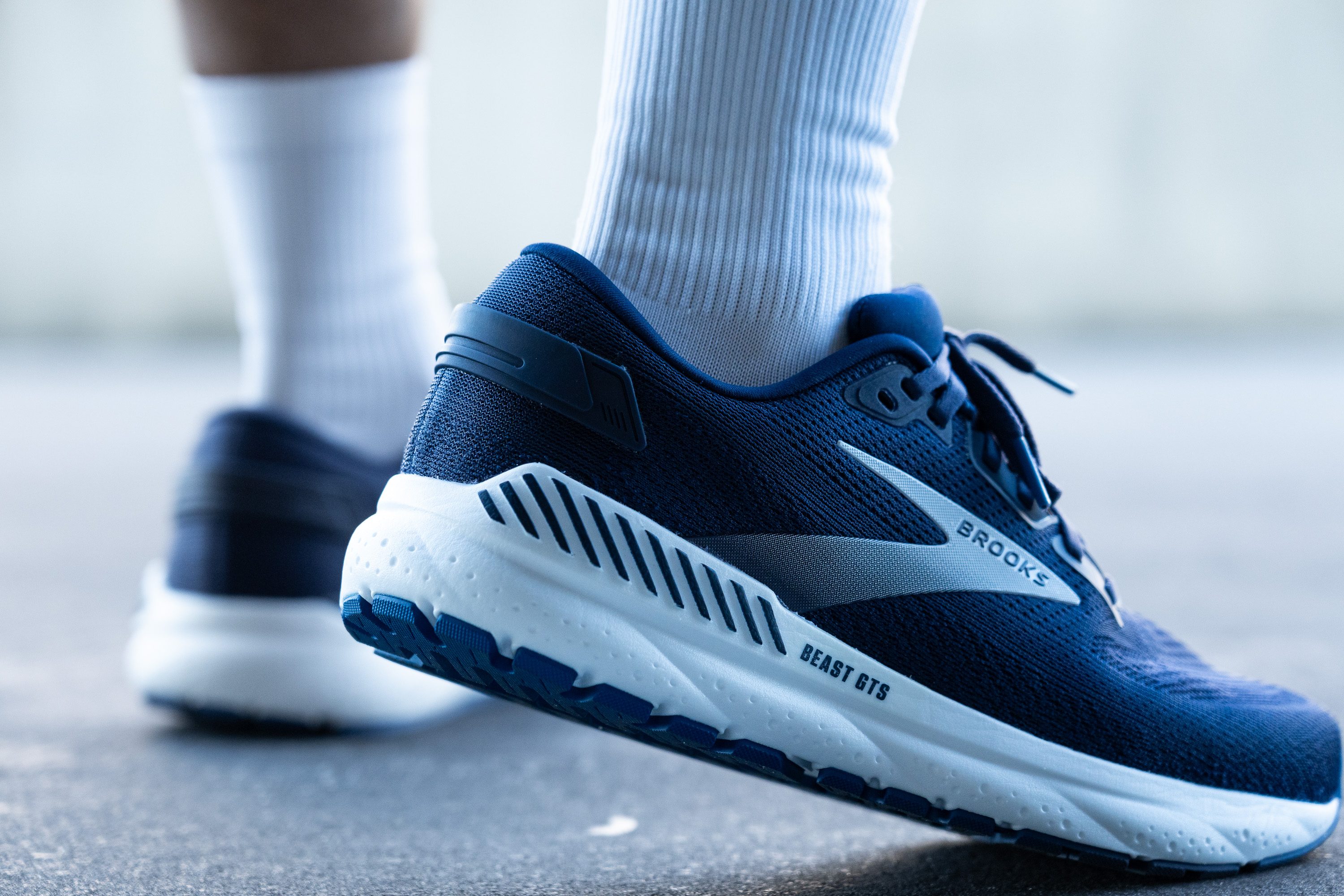
| Beast GTS 24 | Ninguno |

